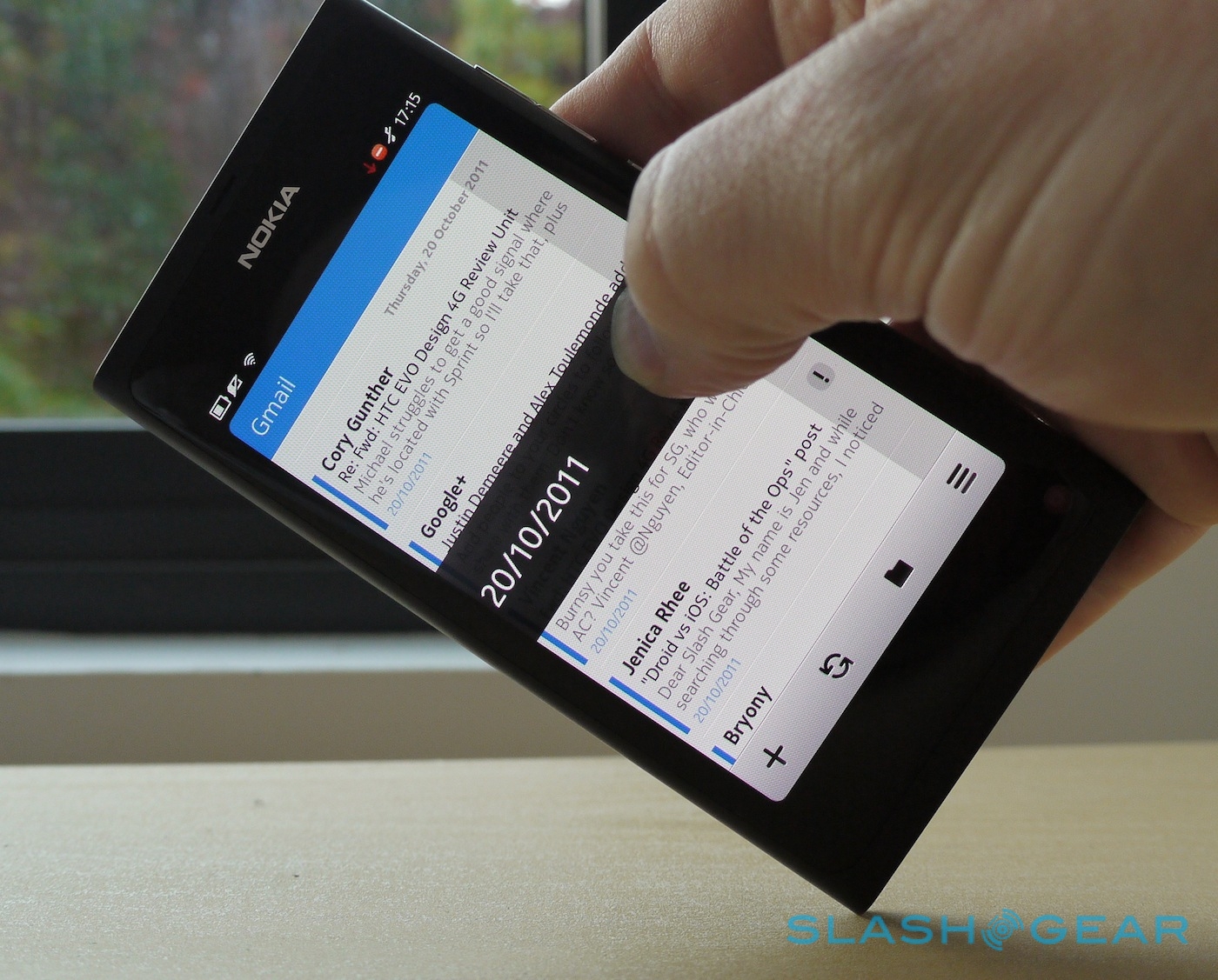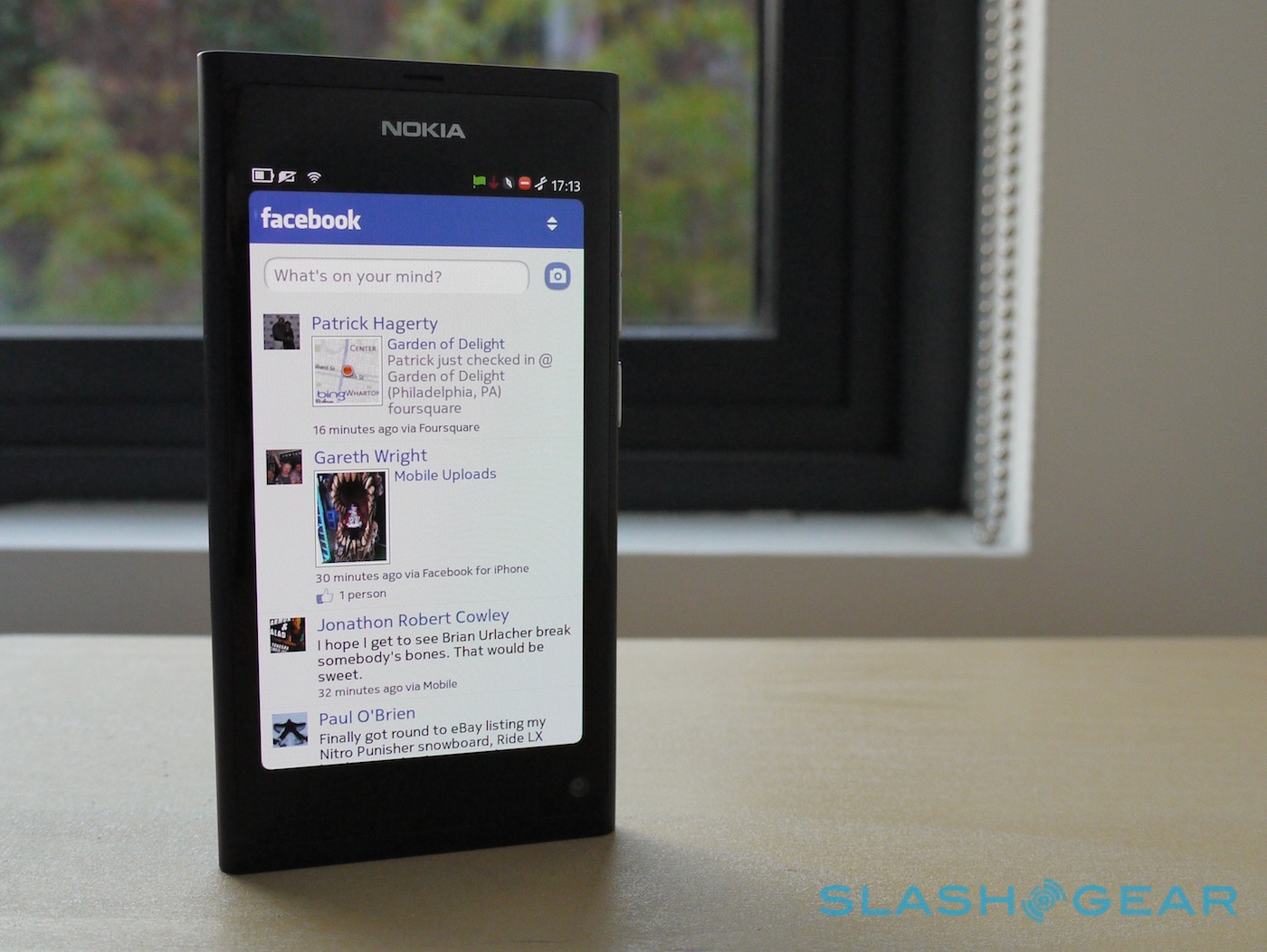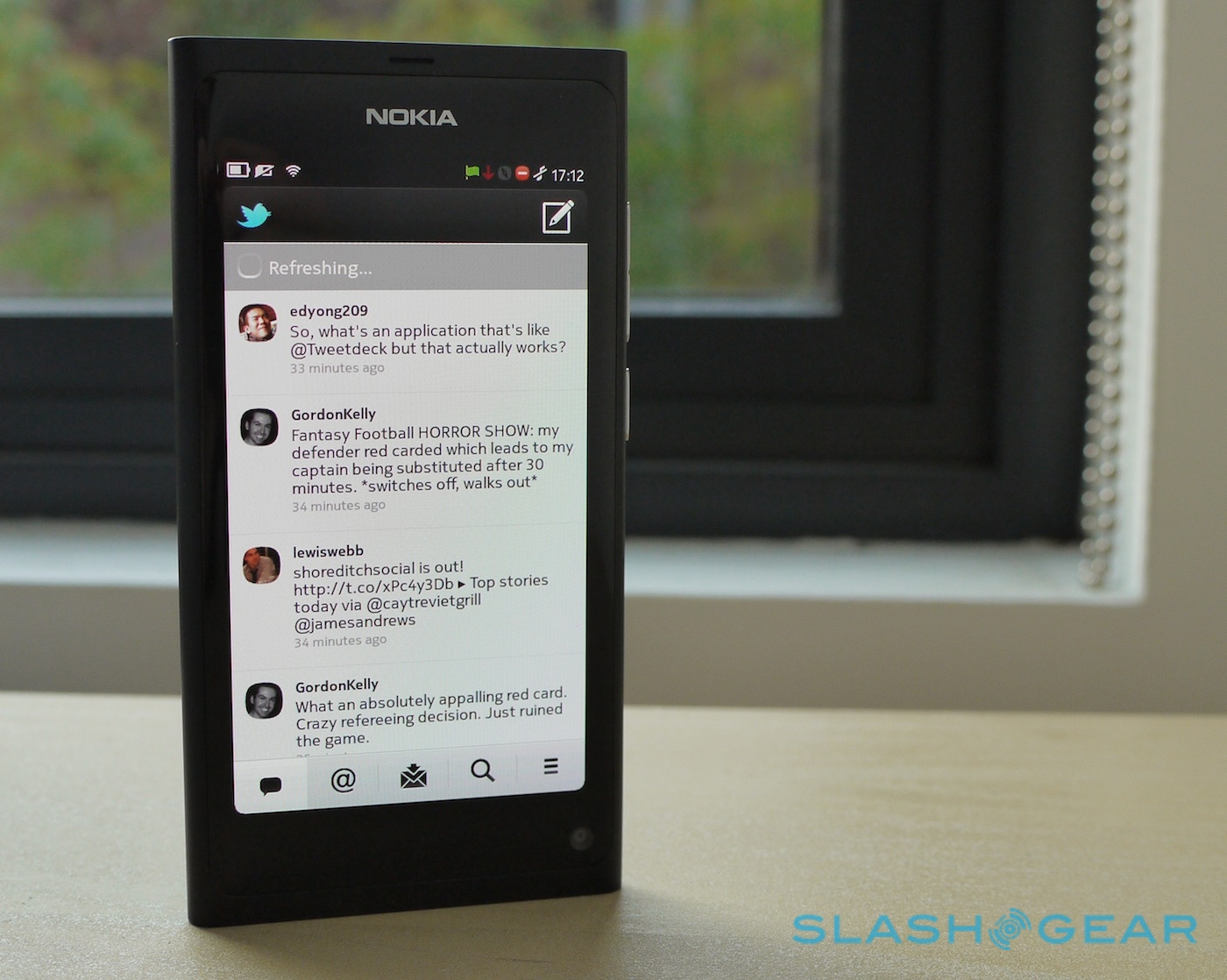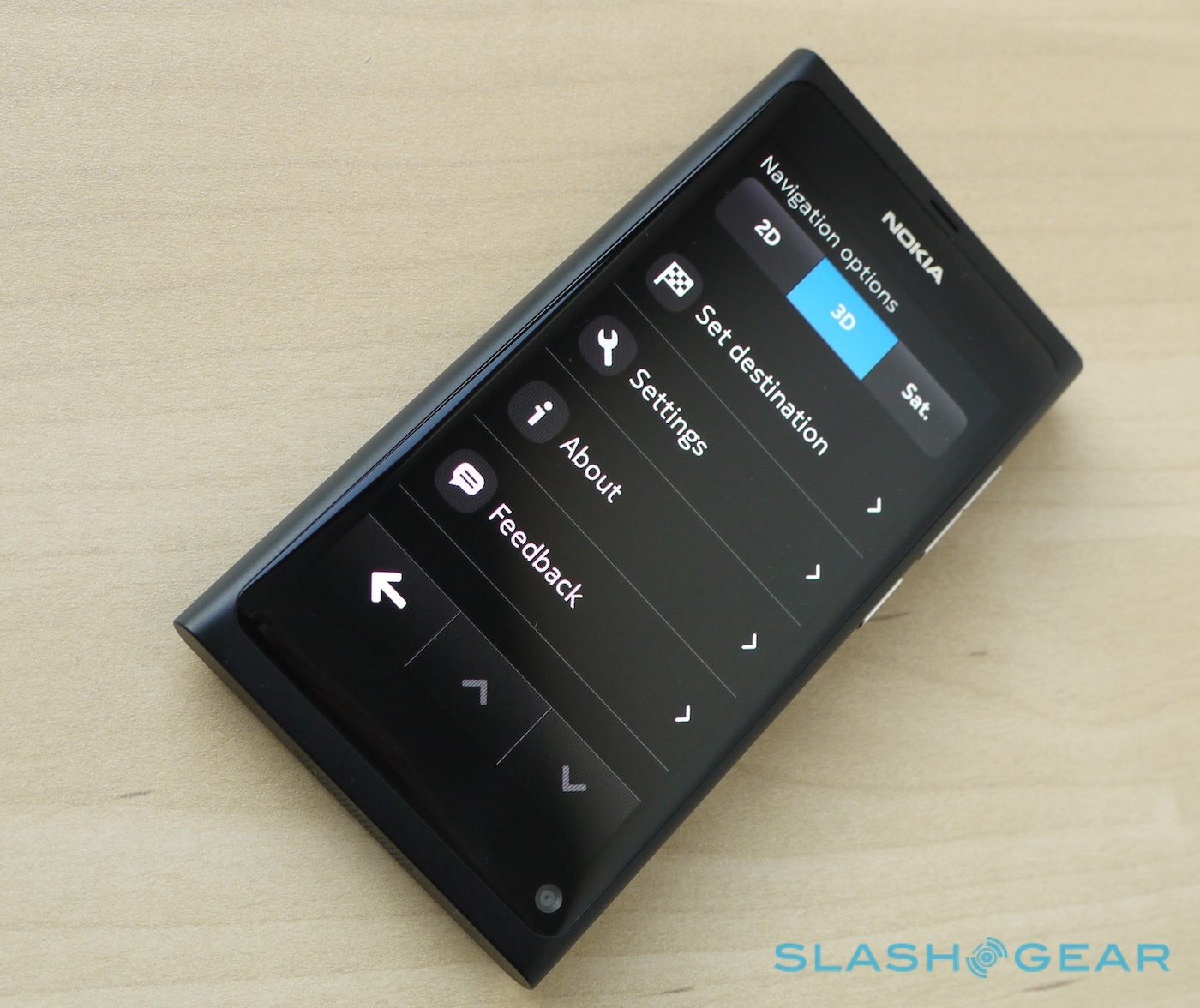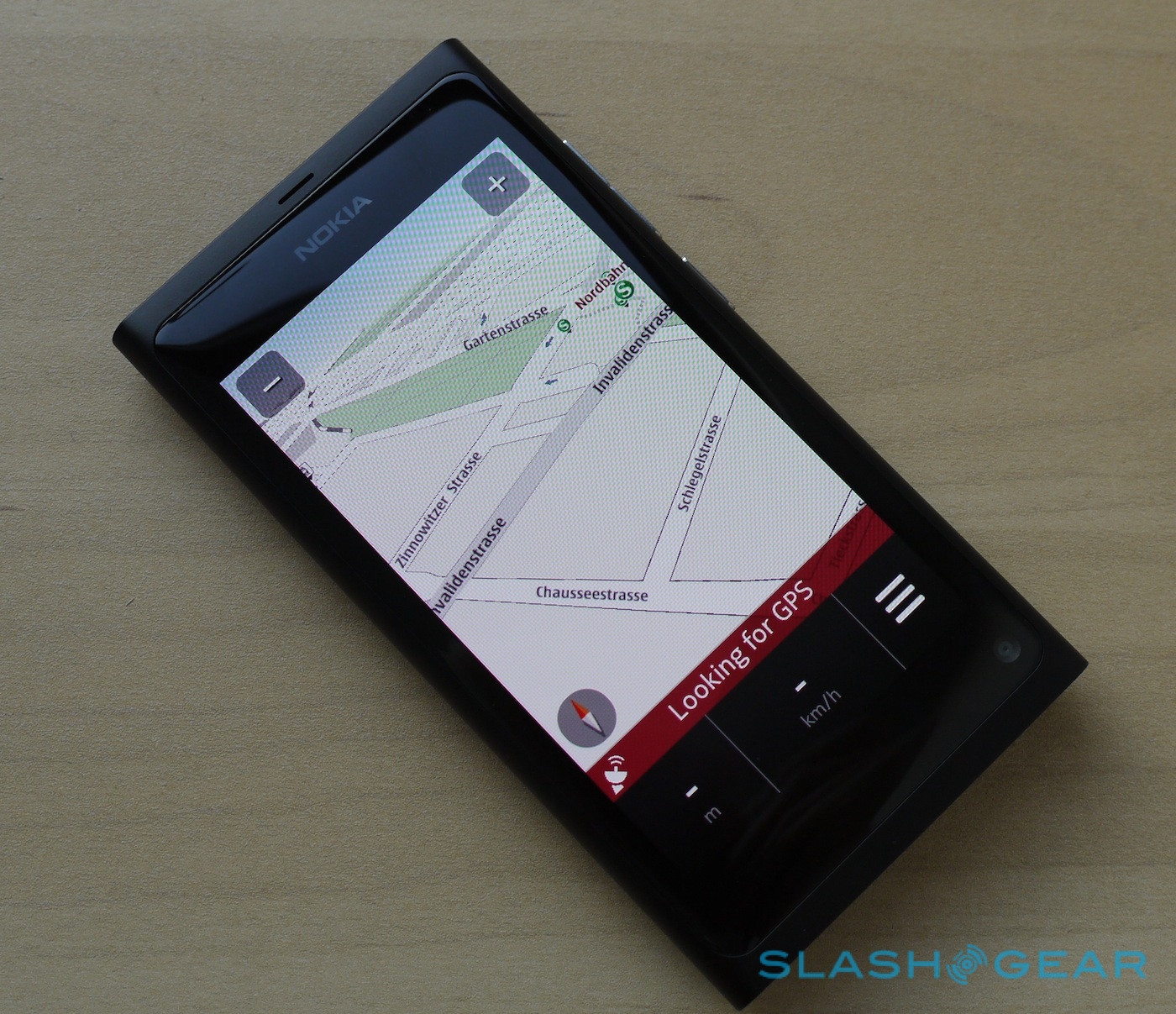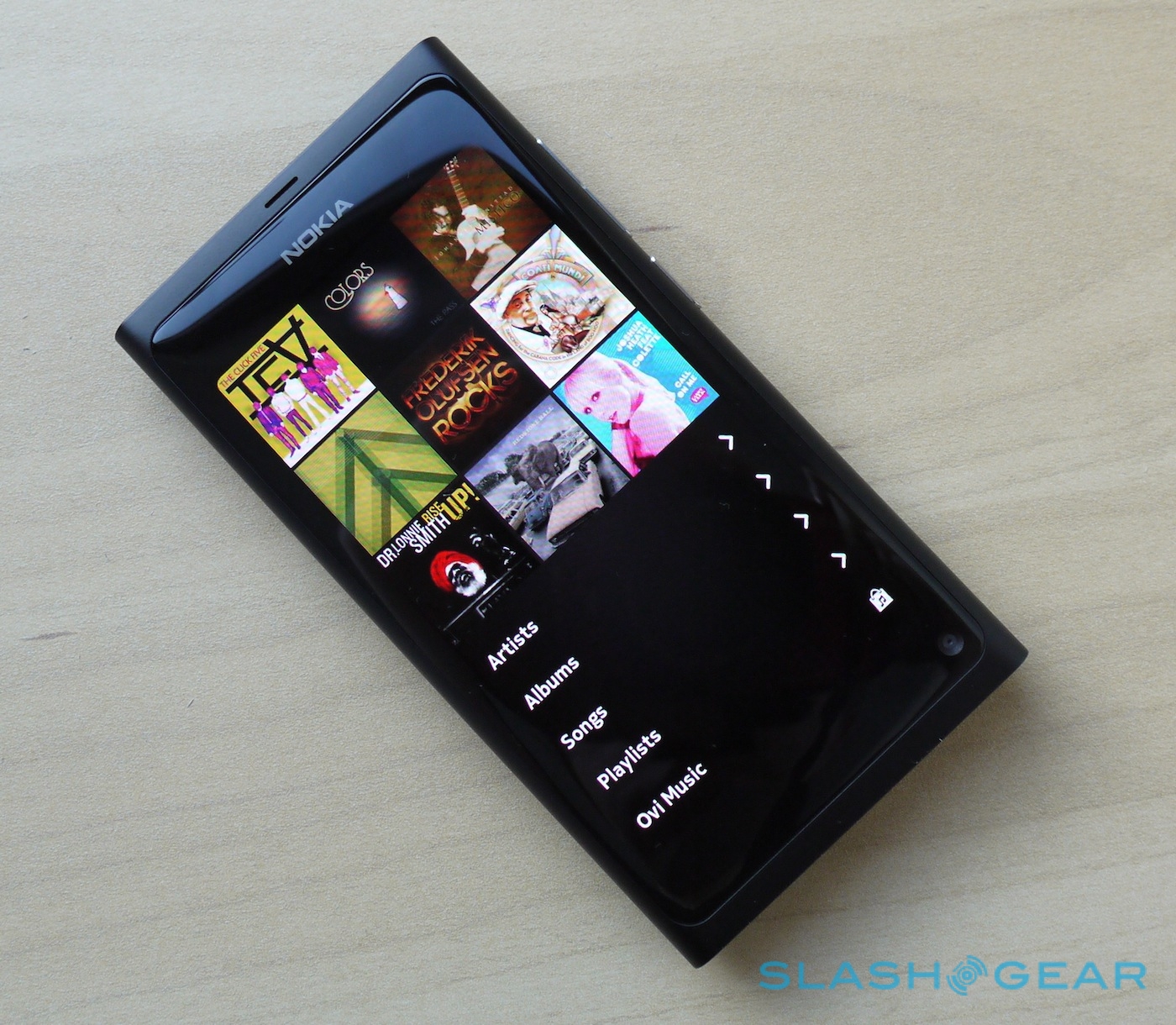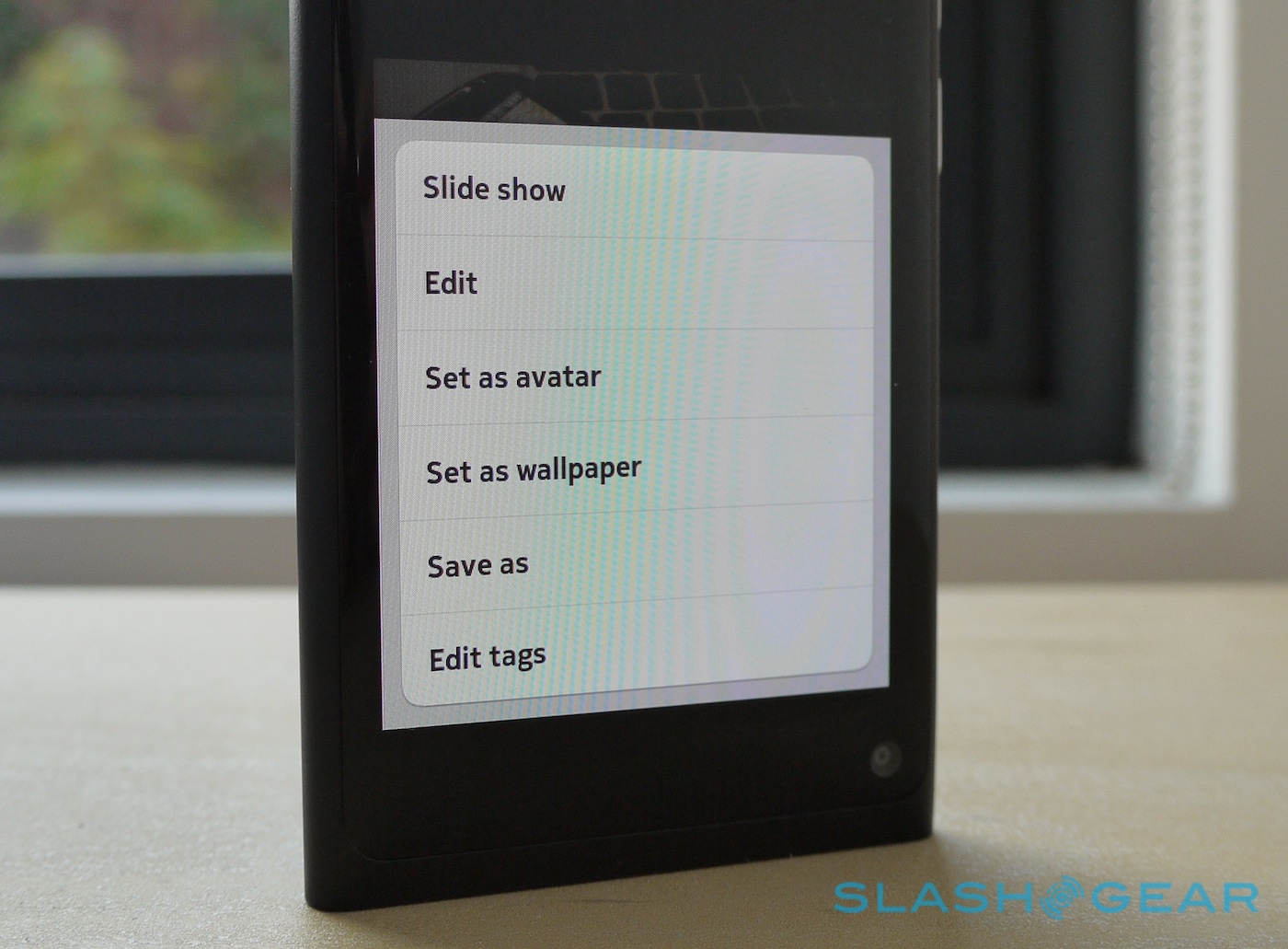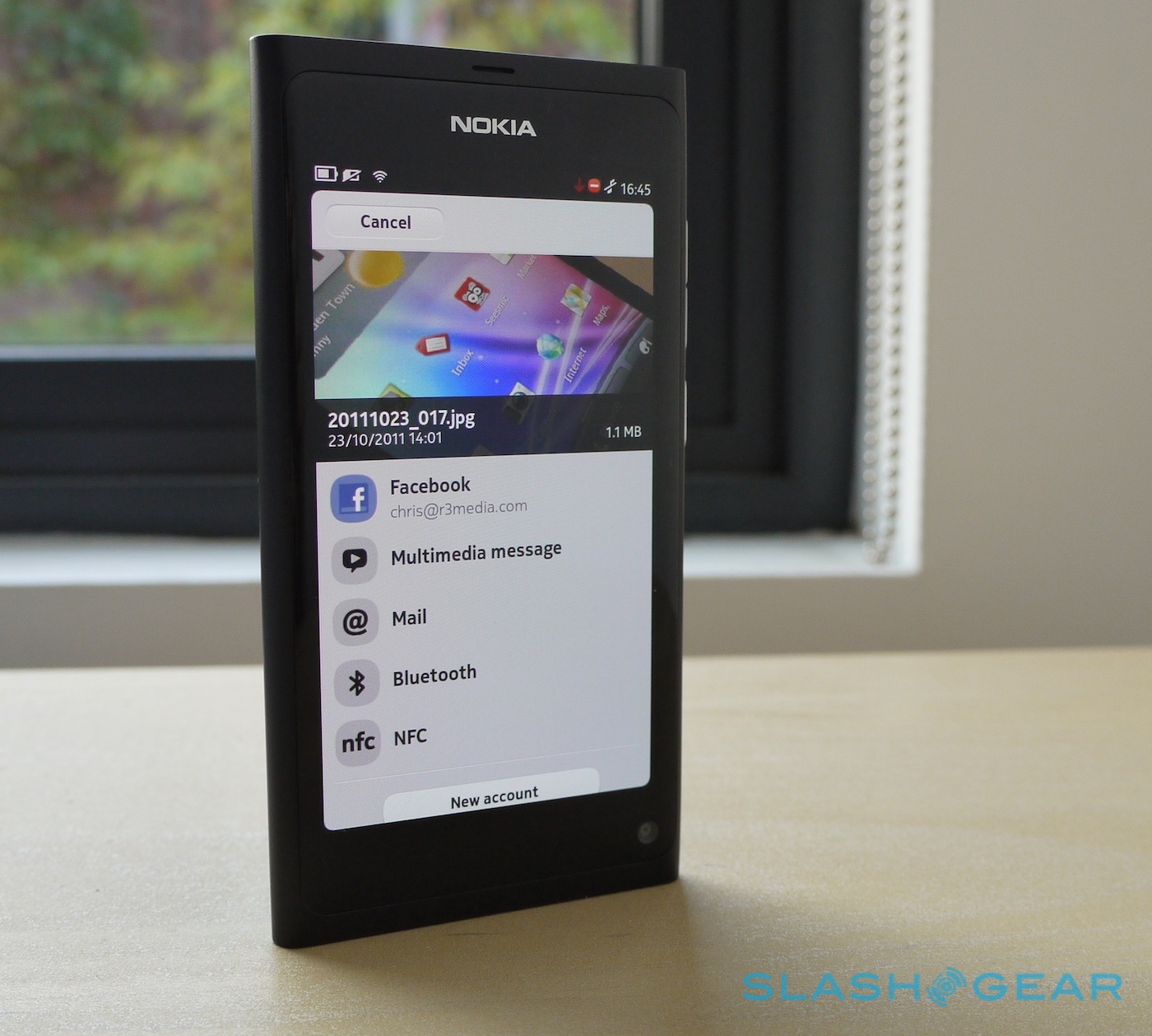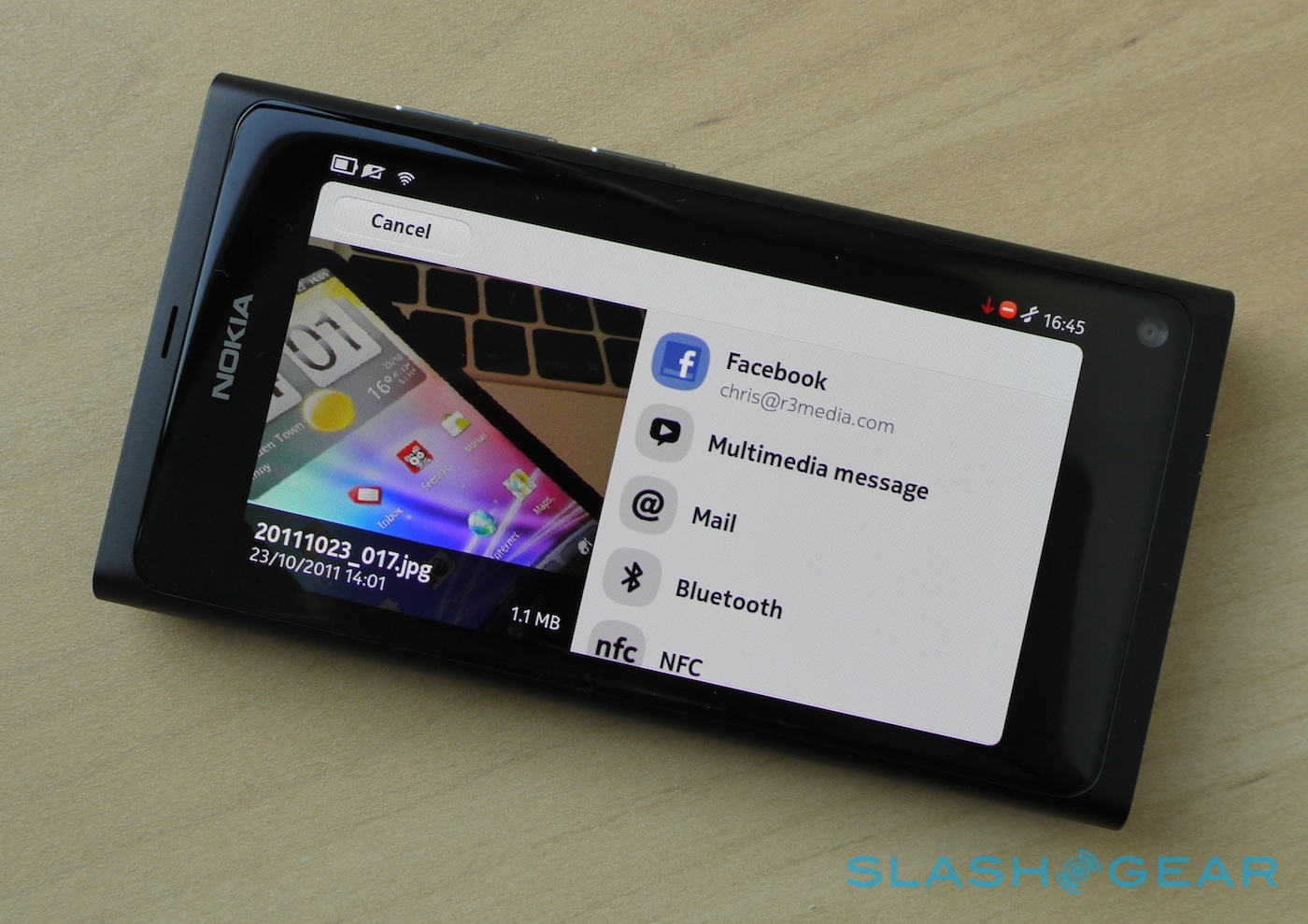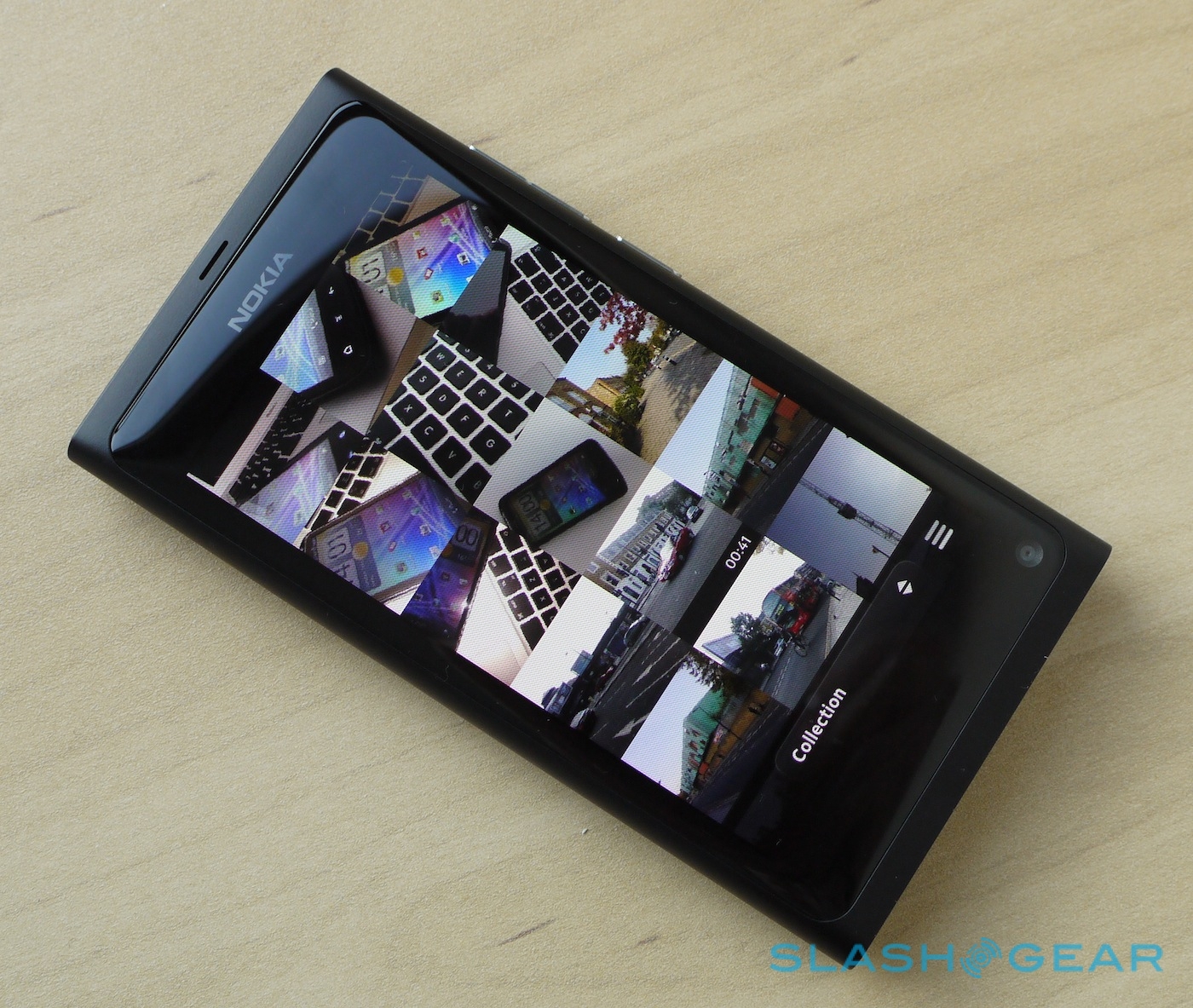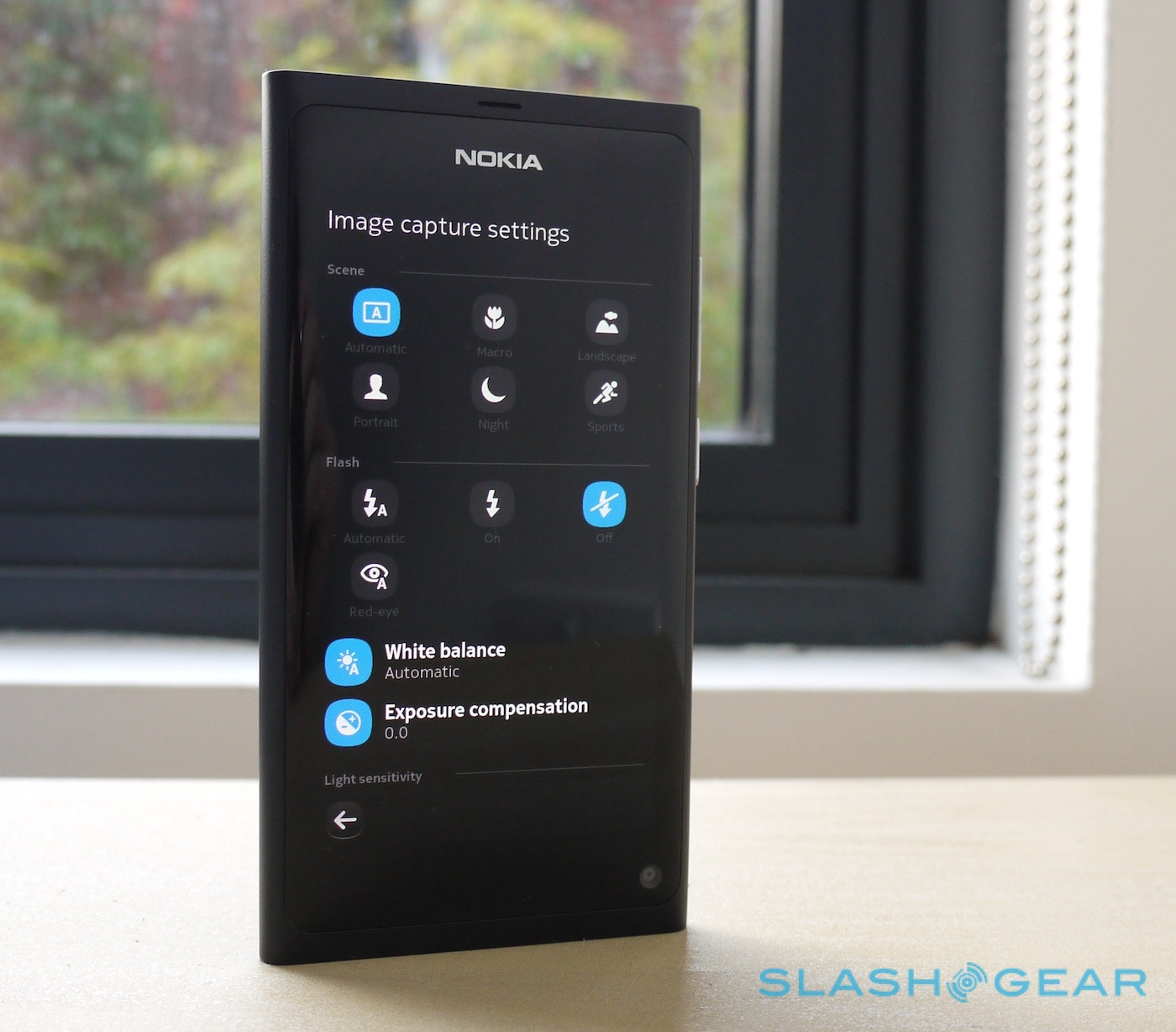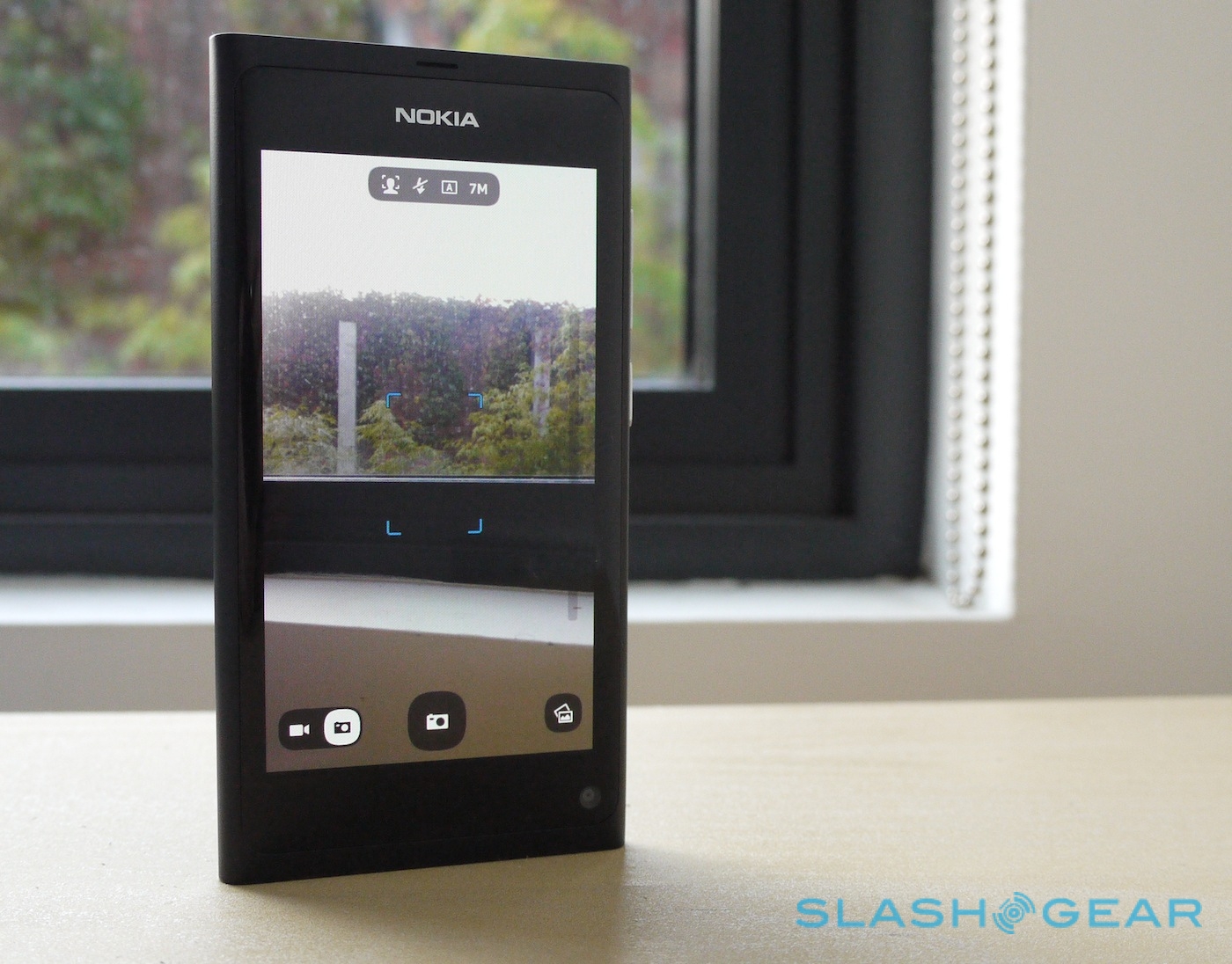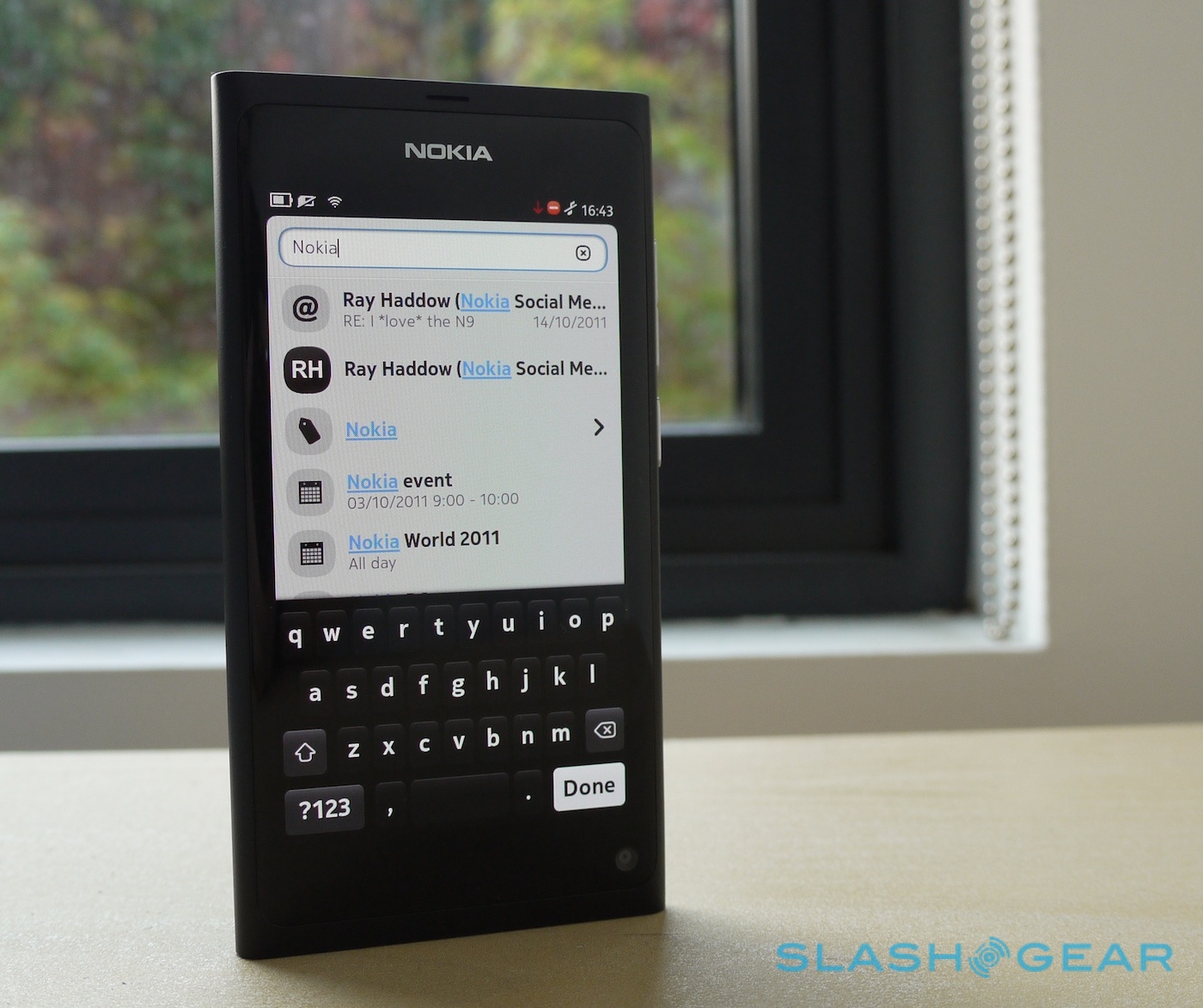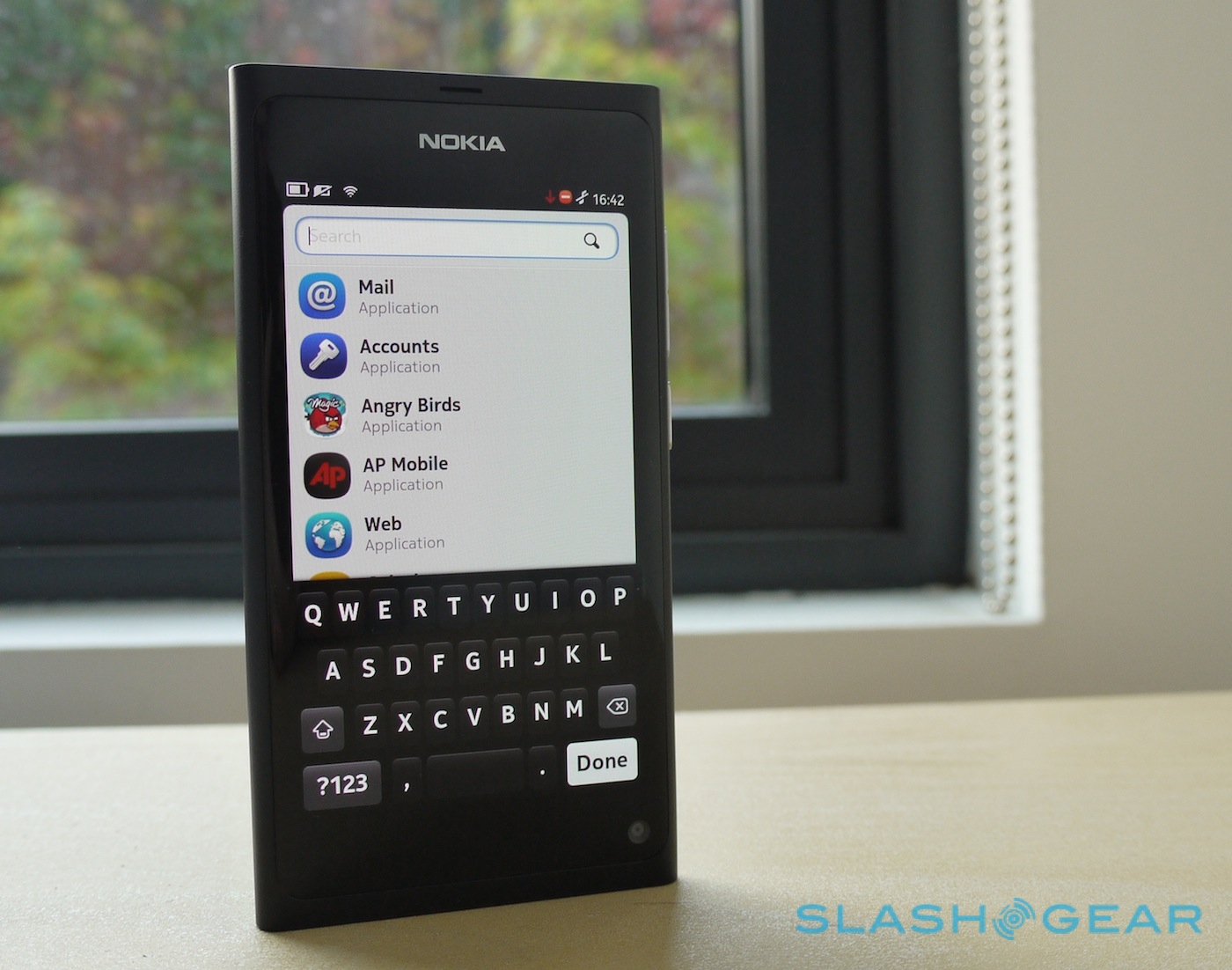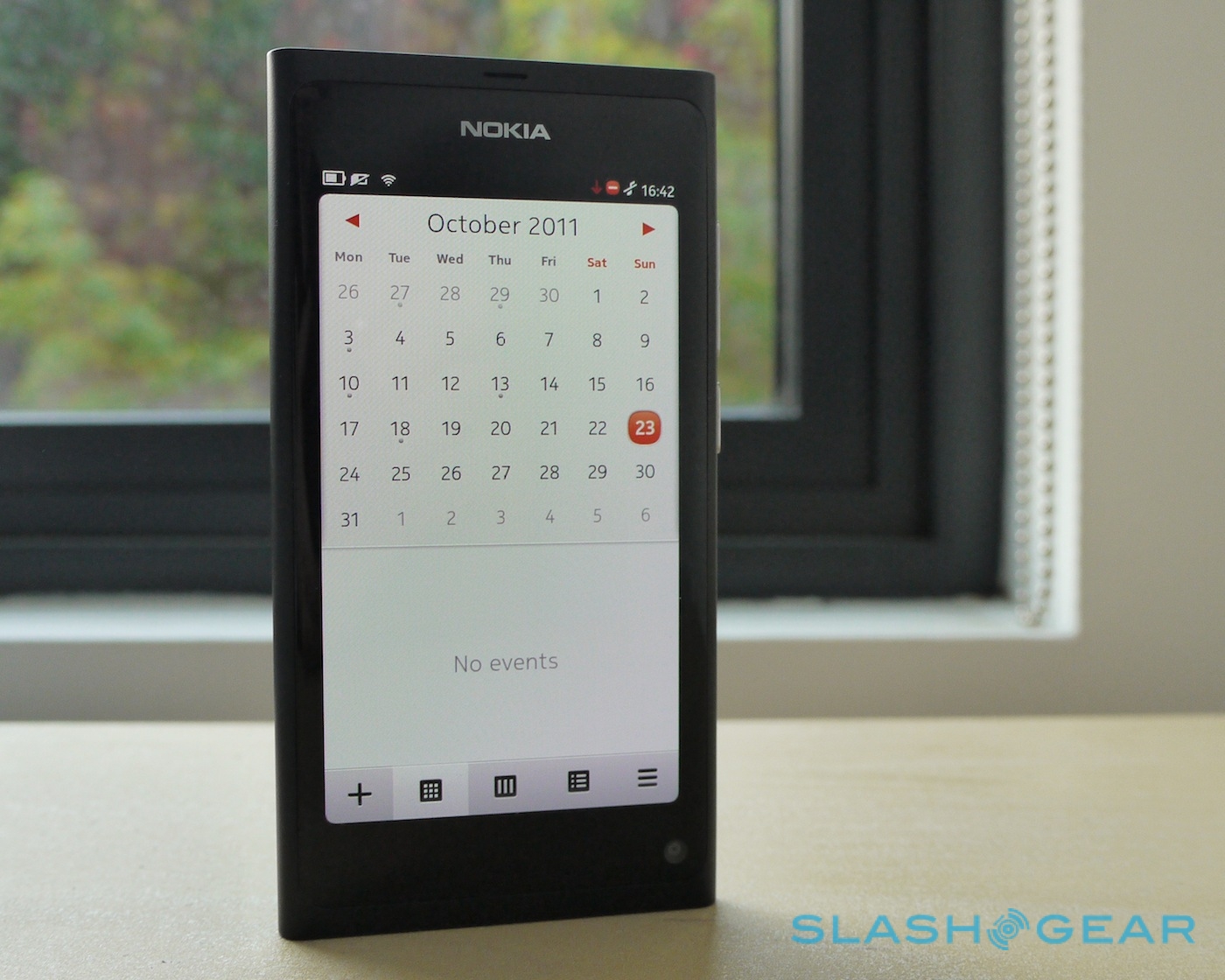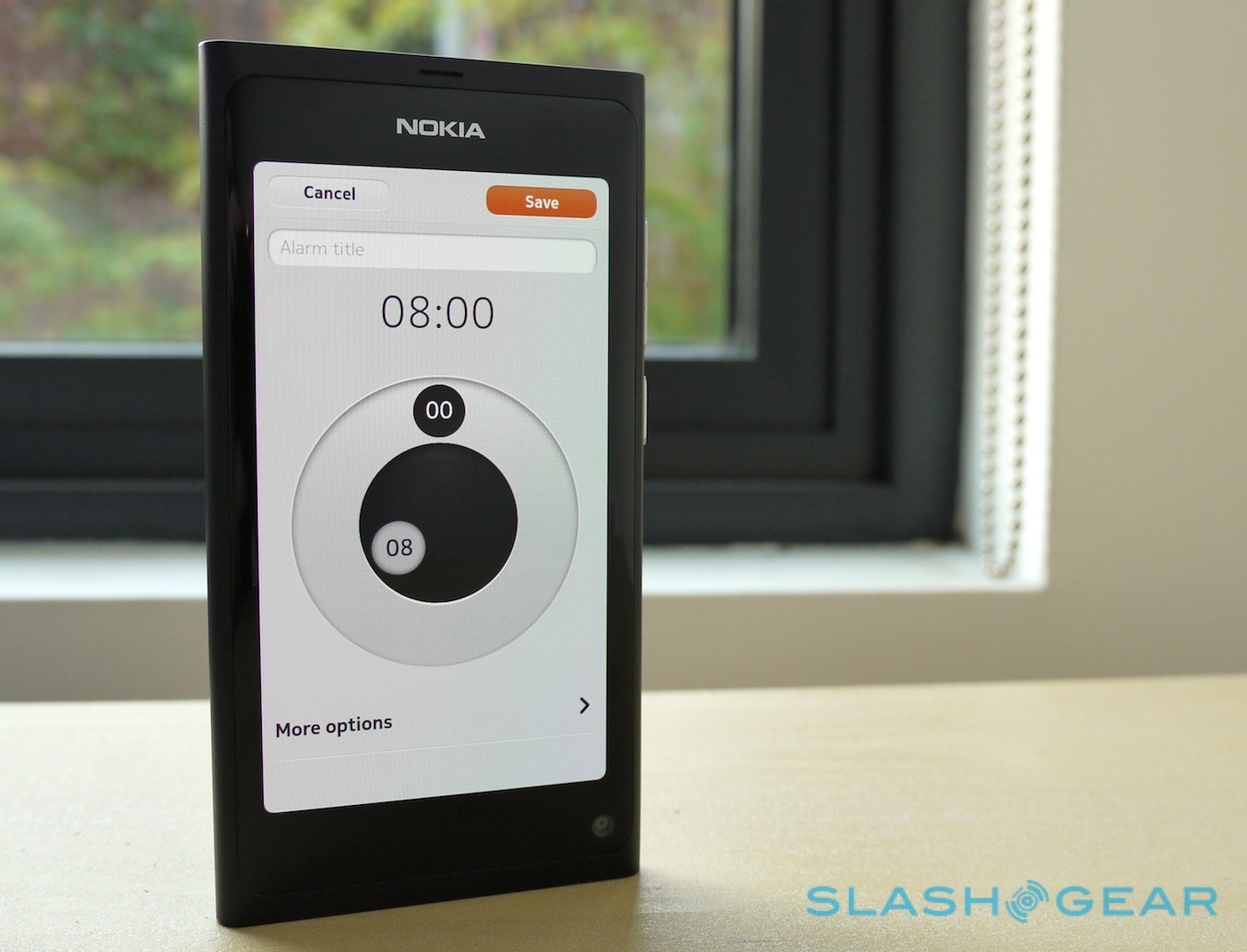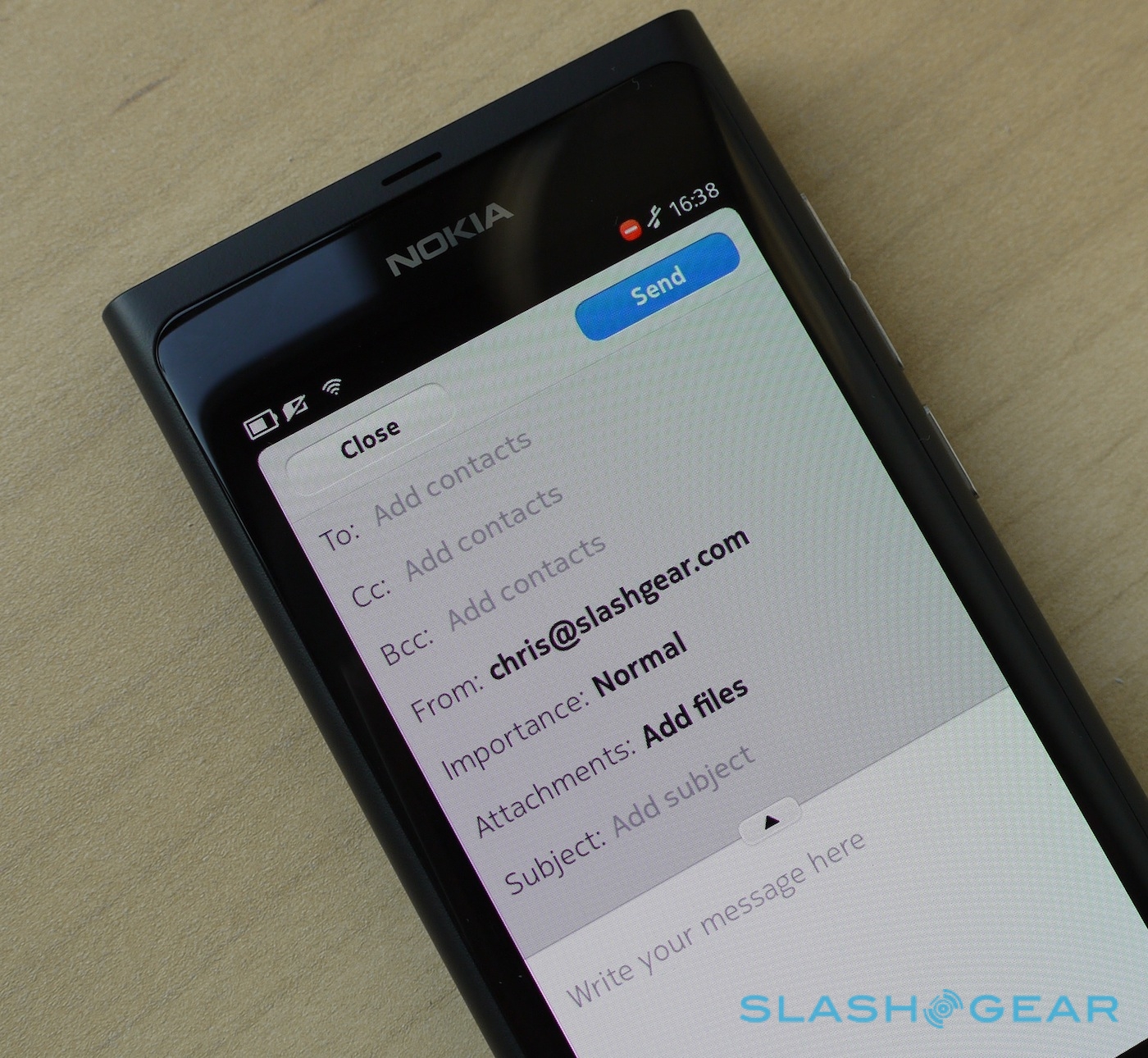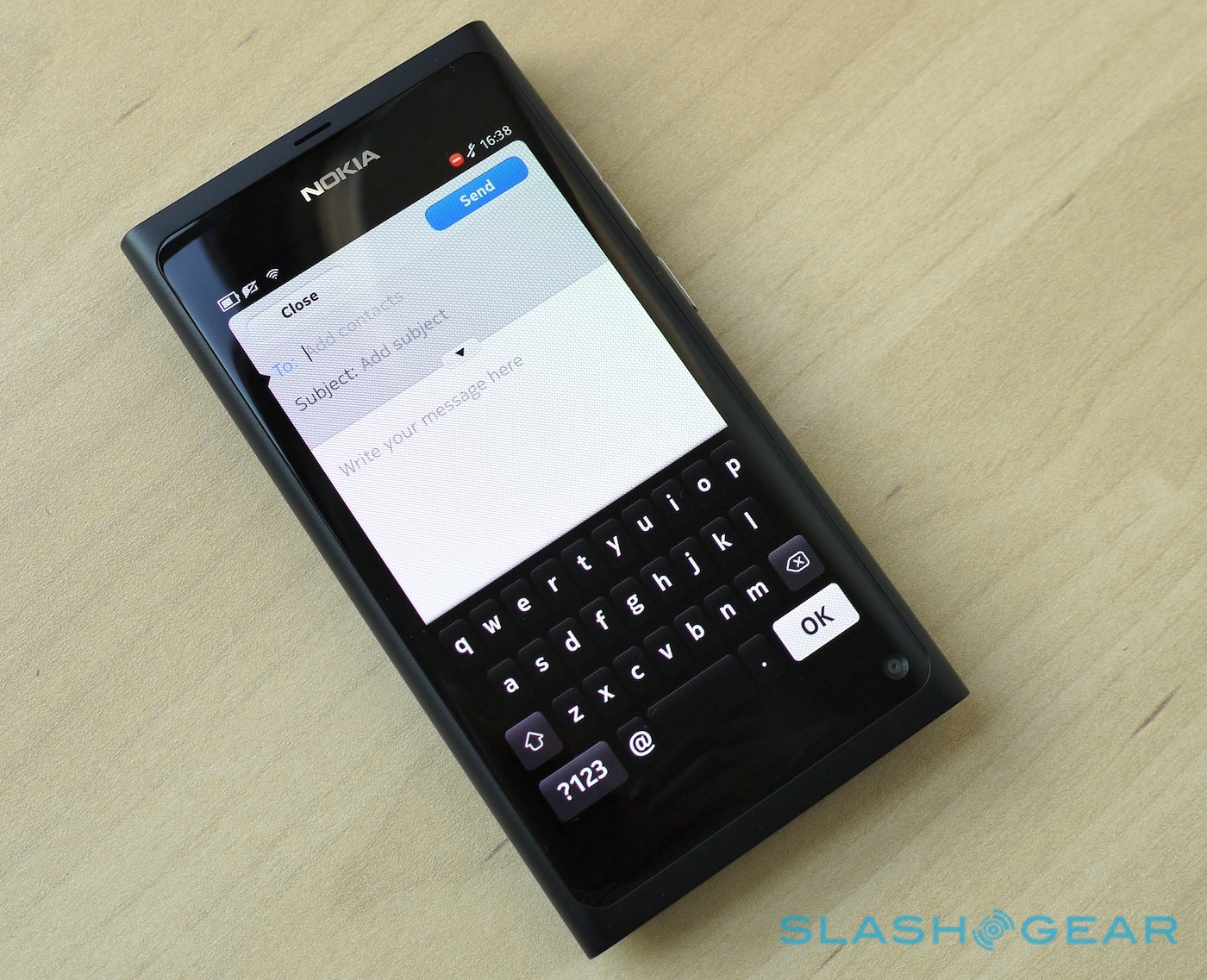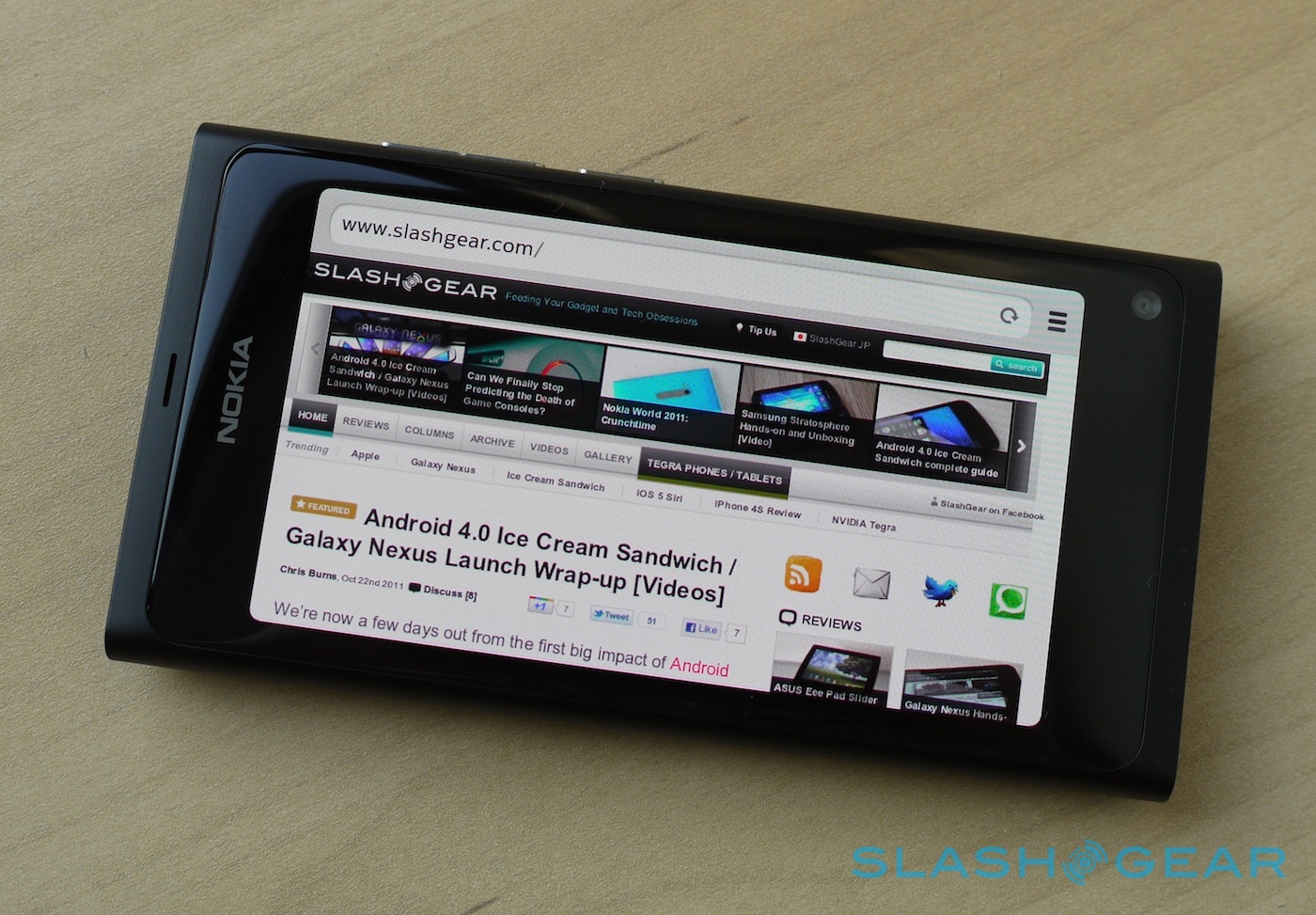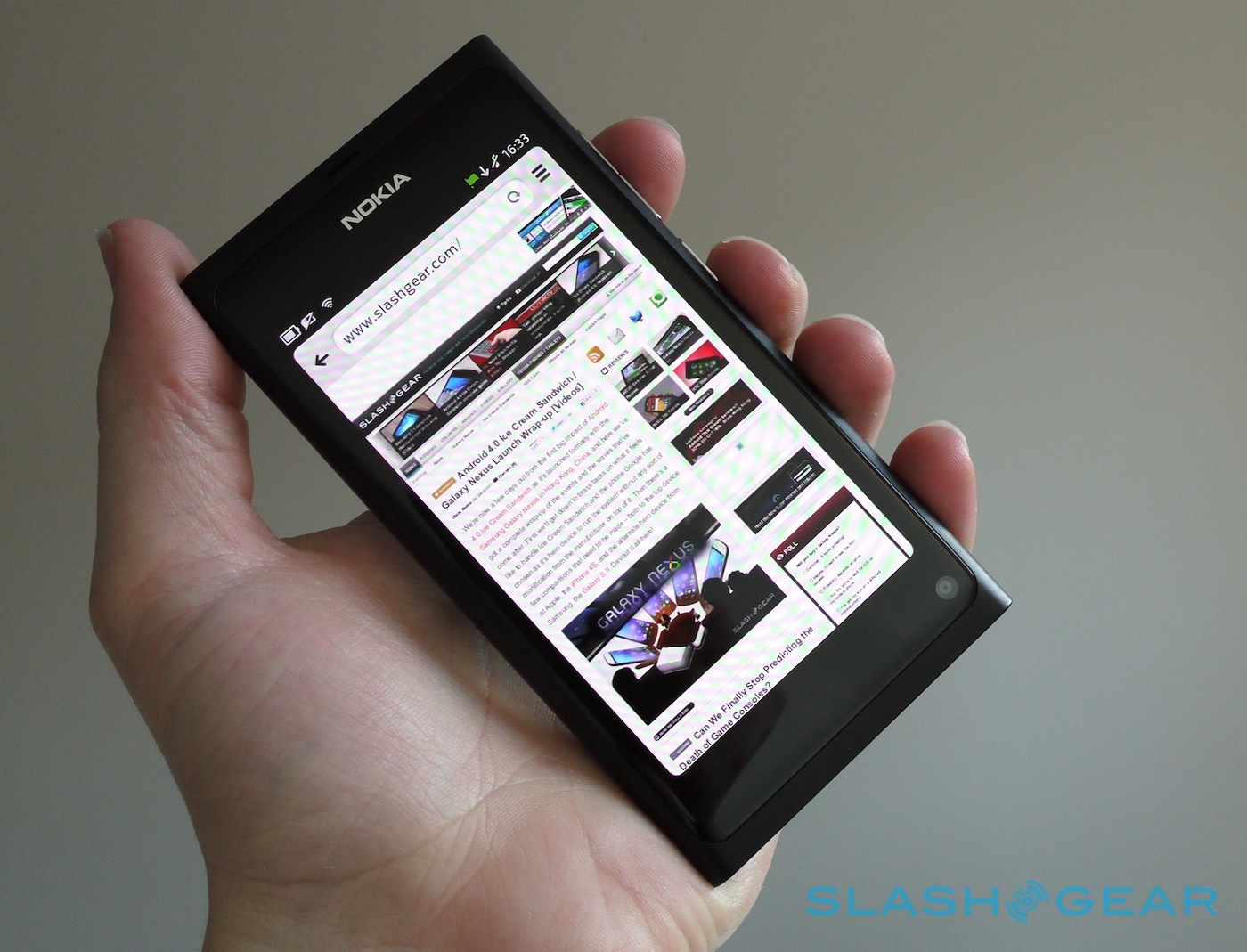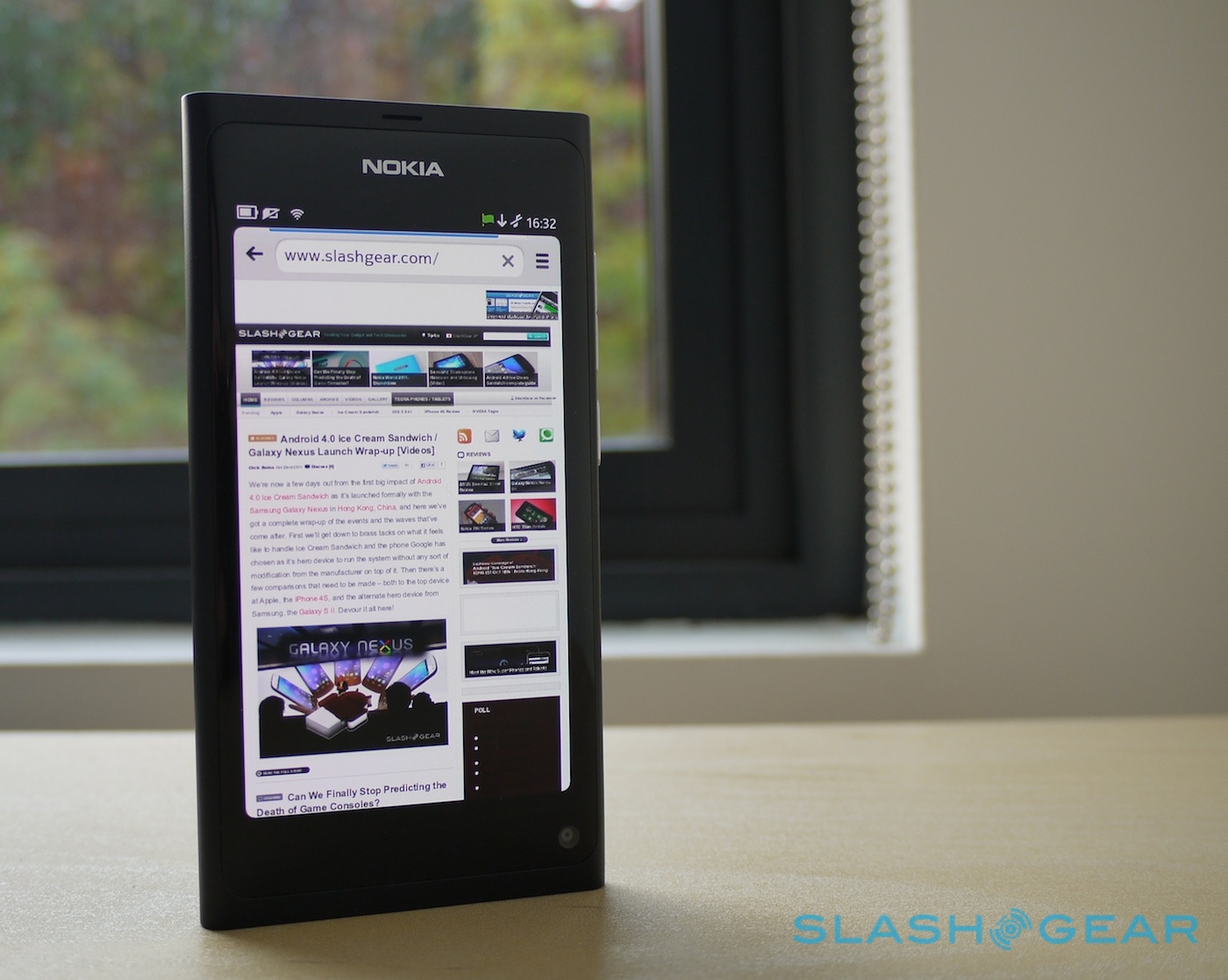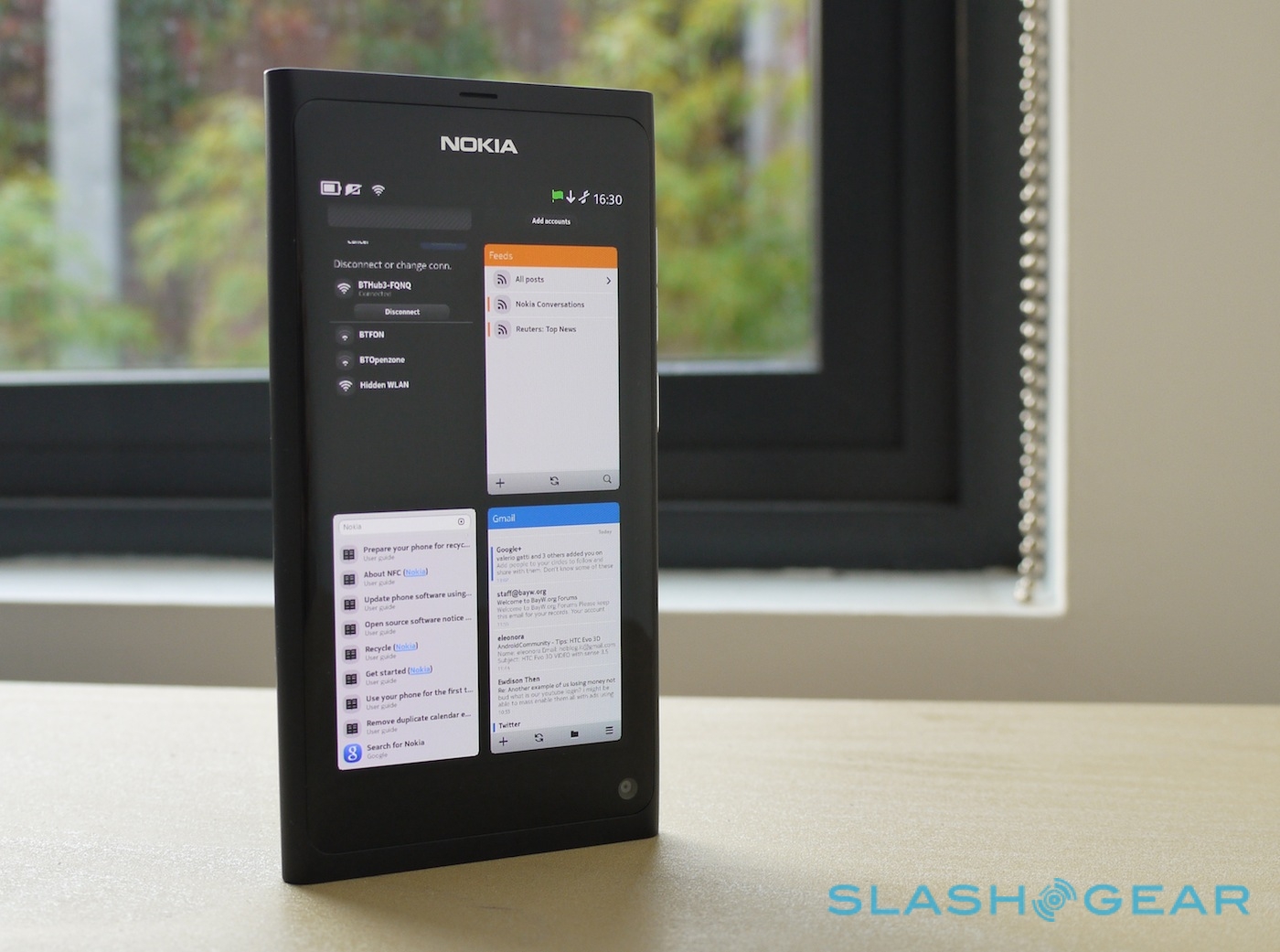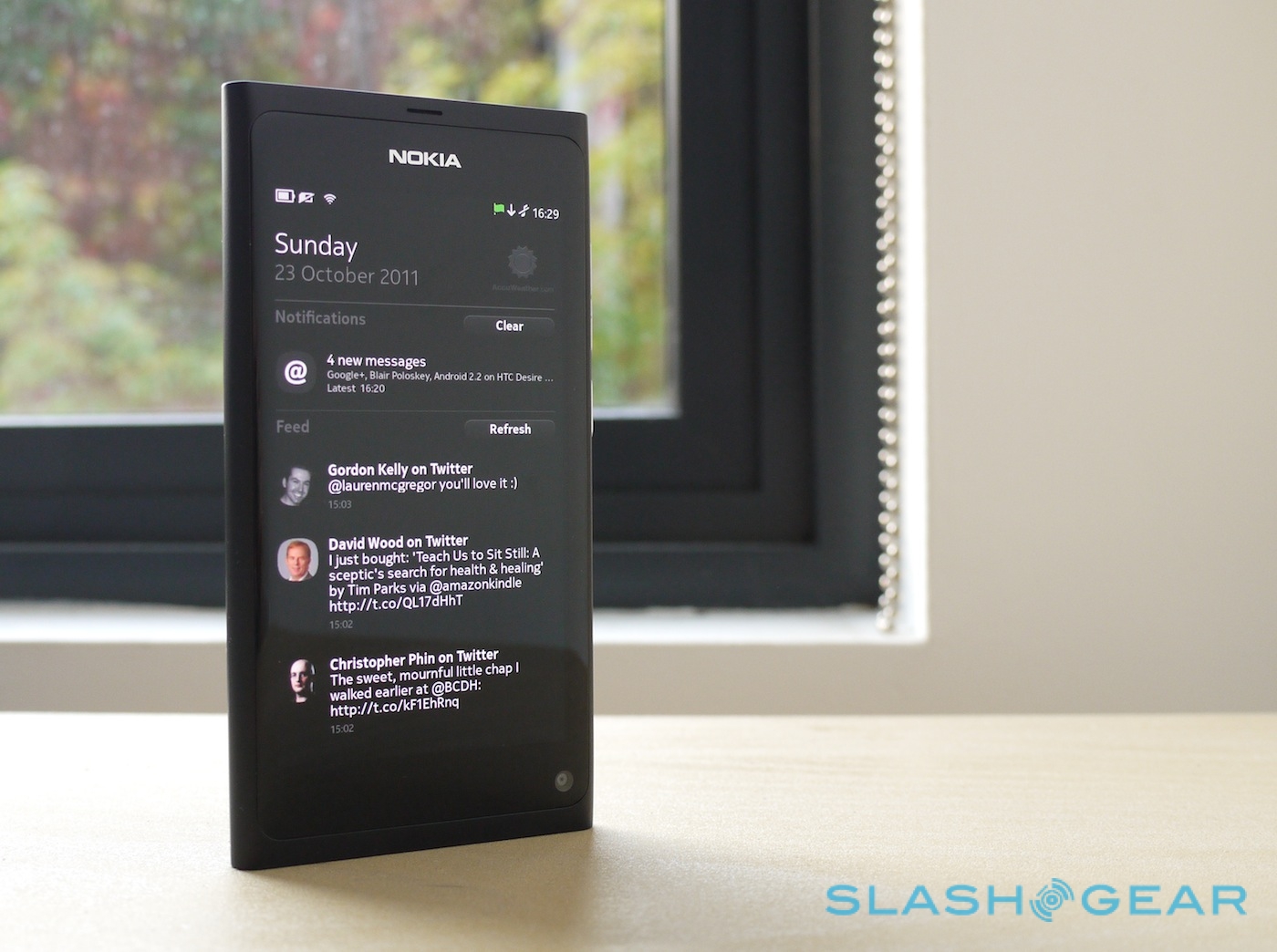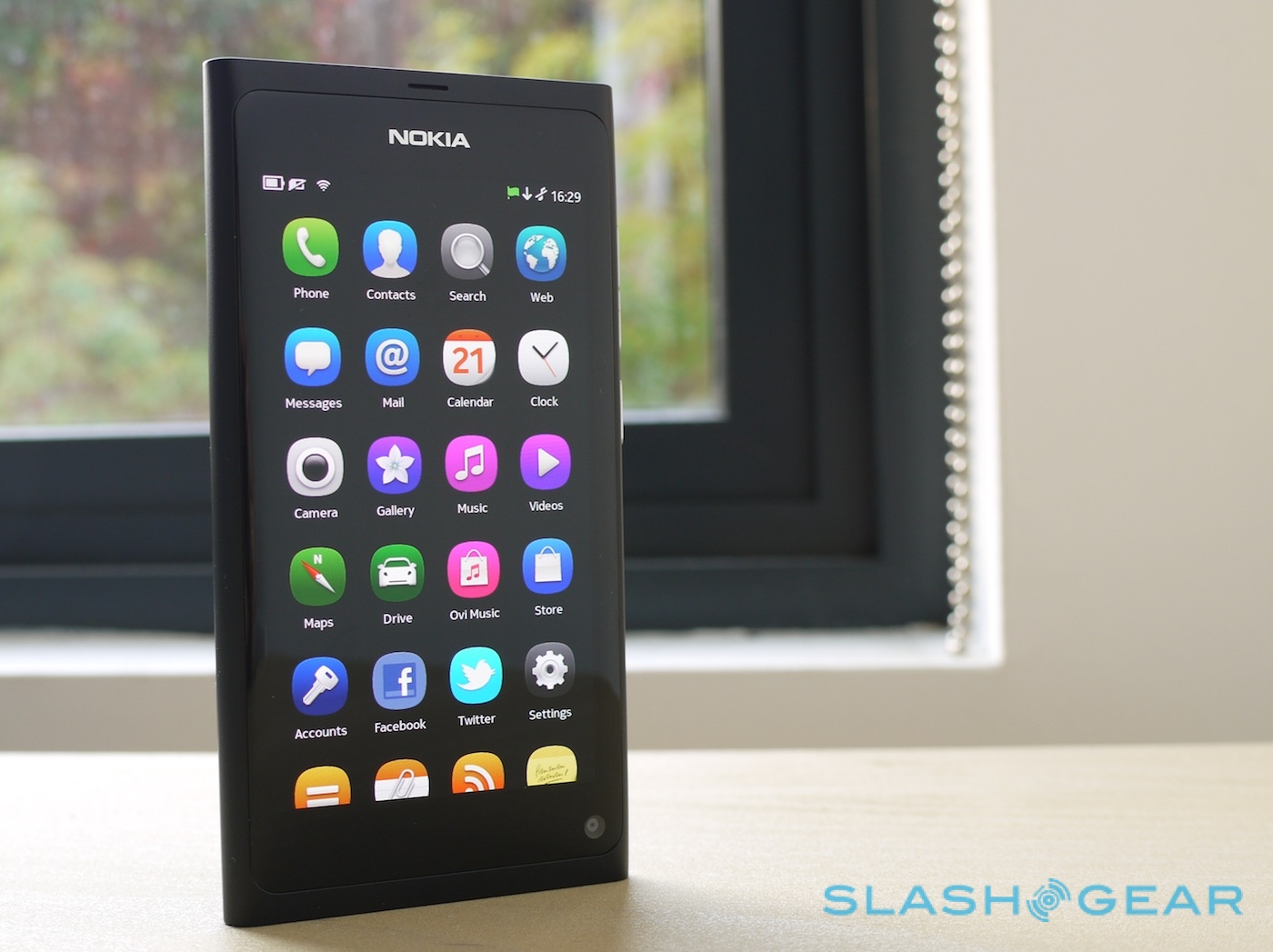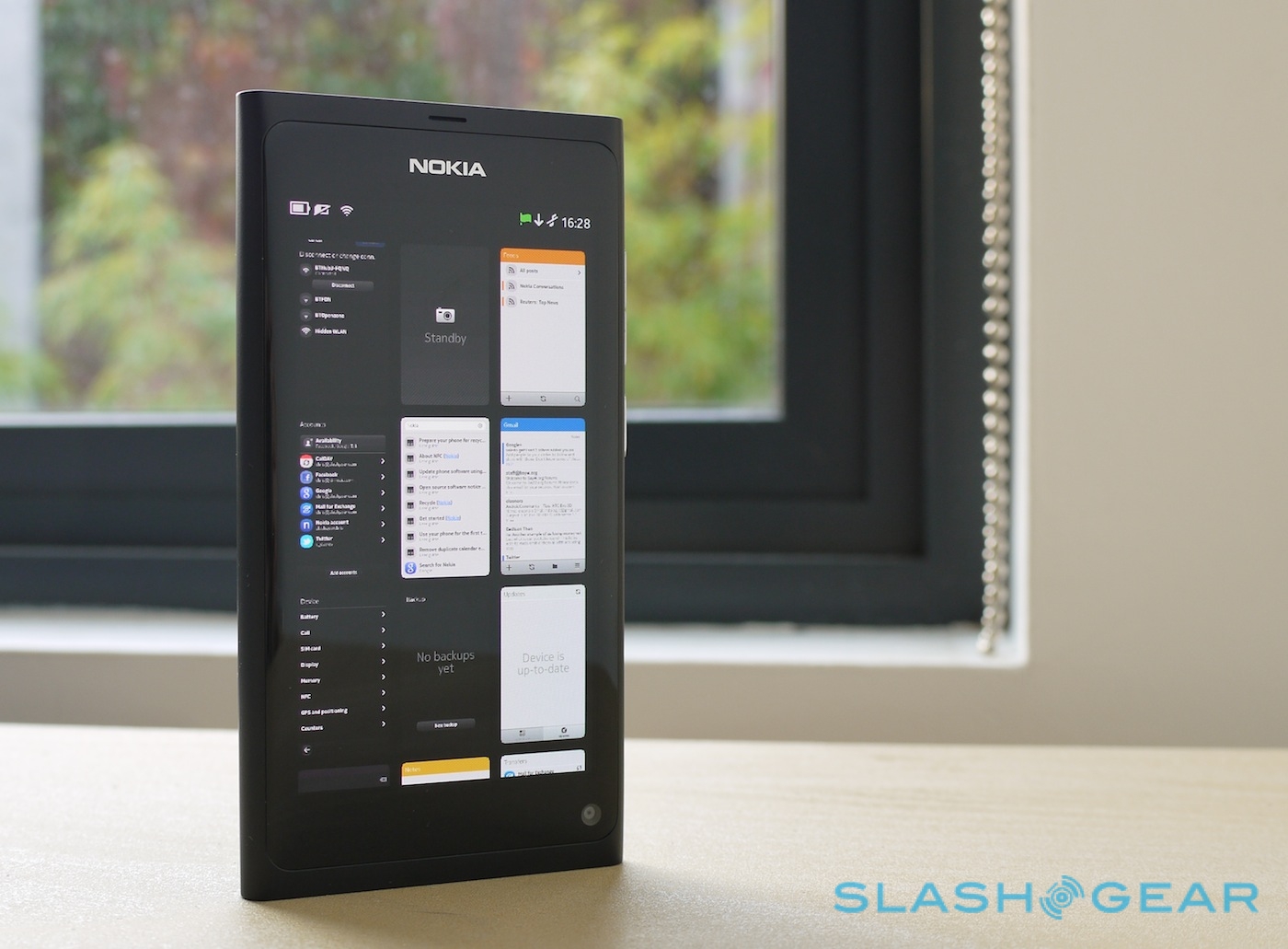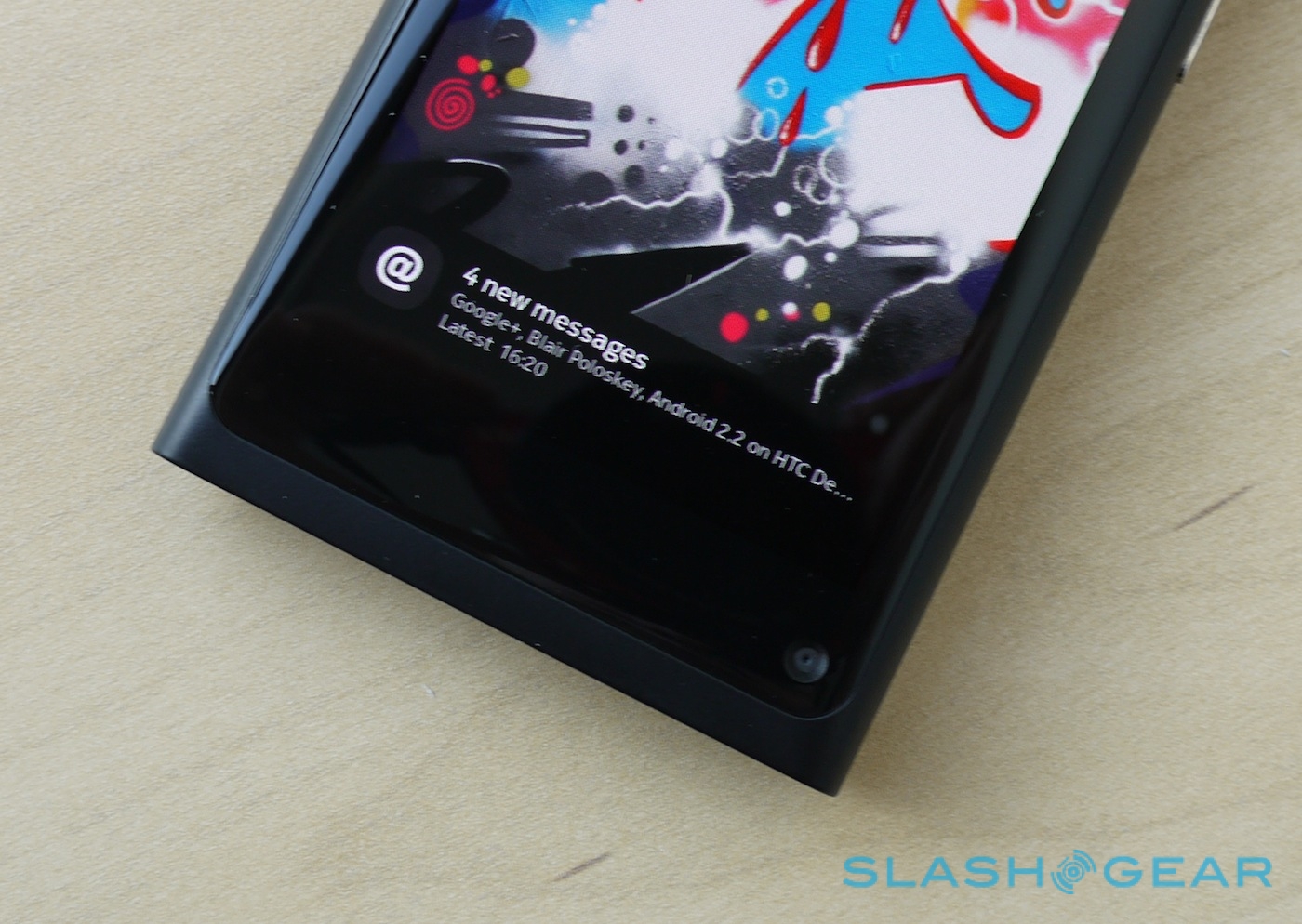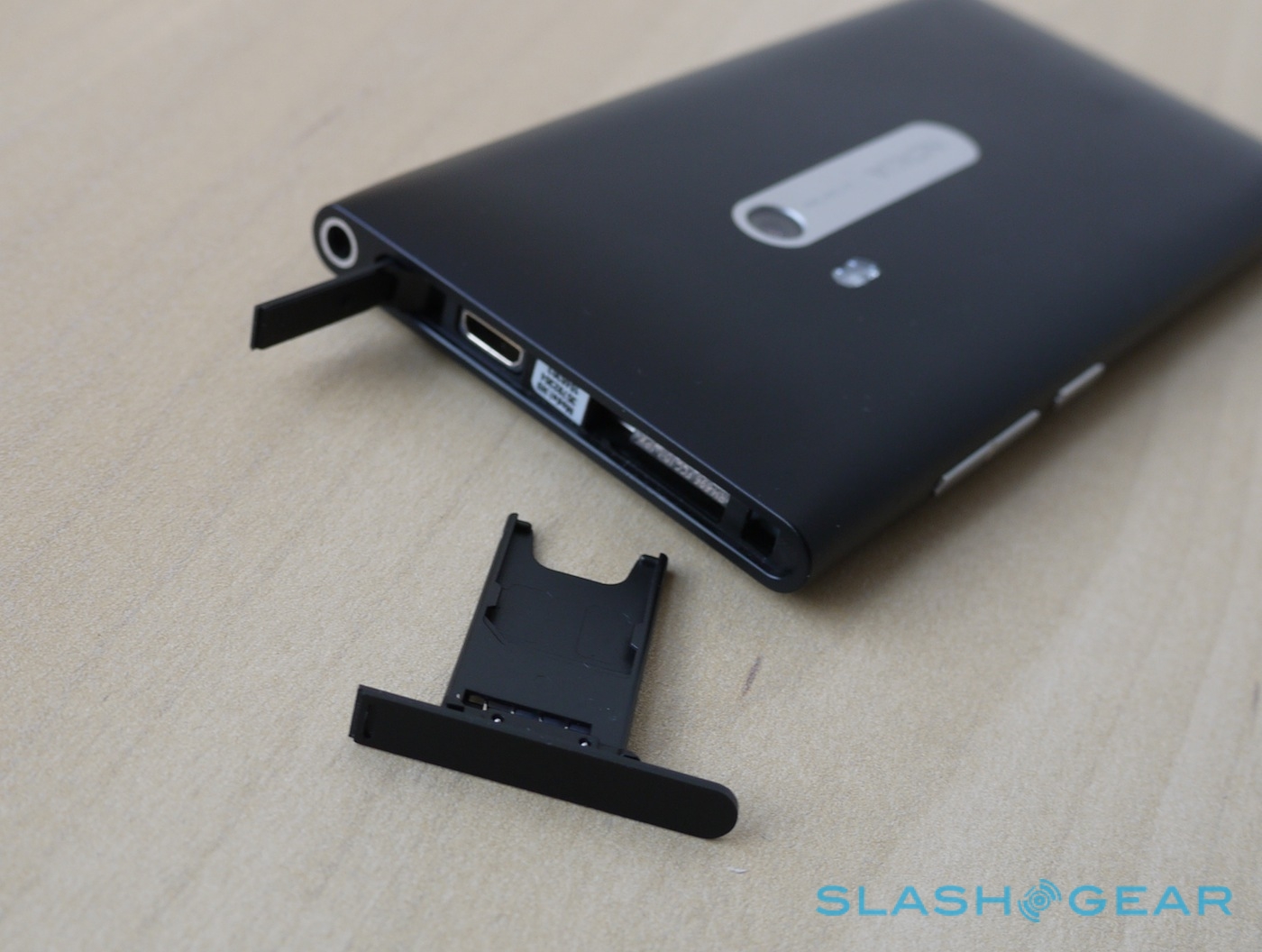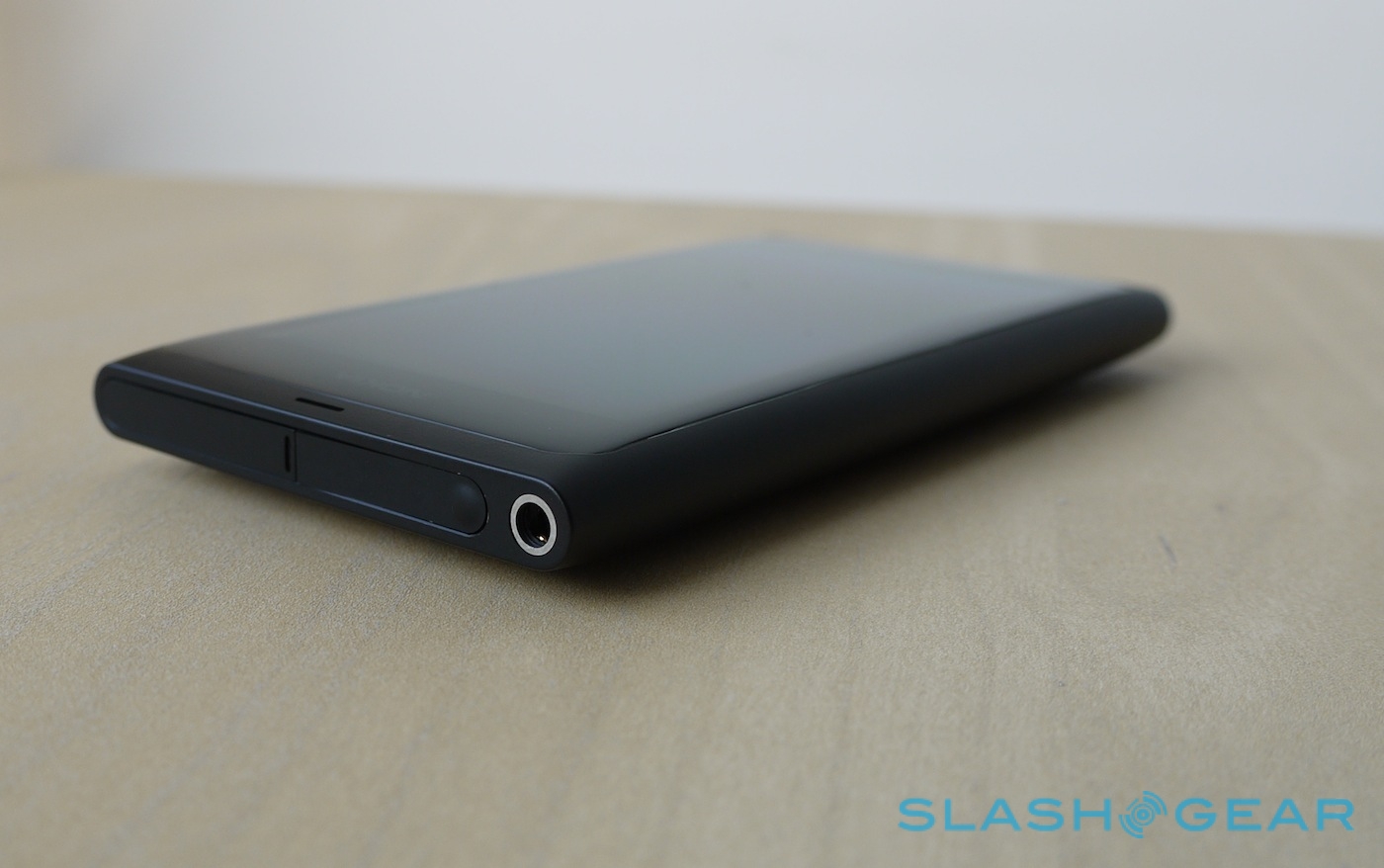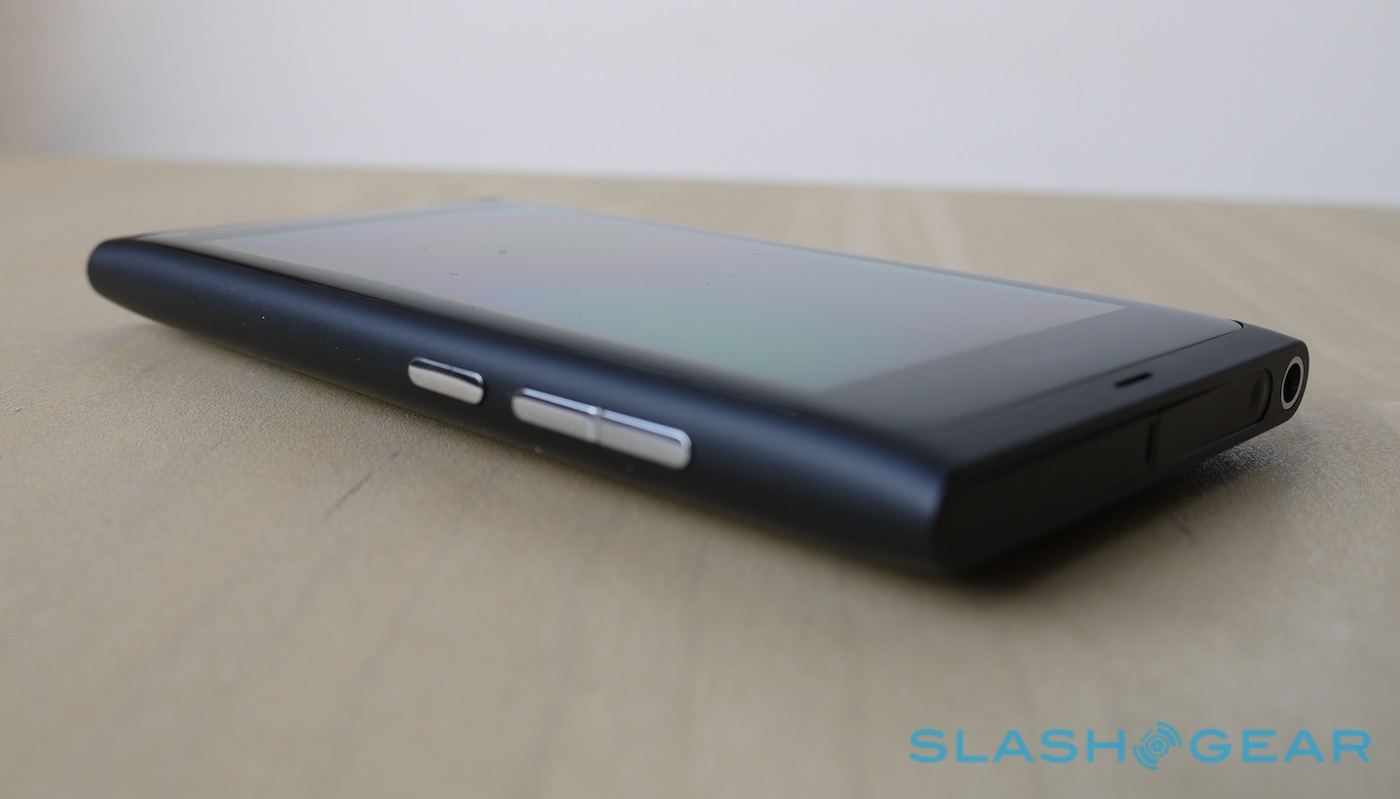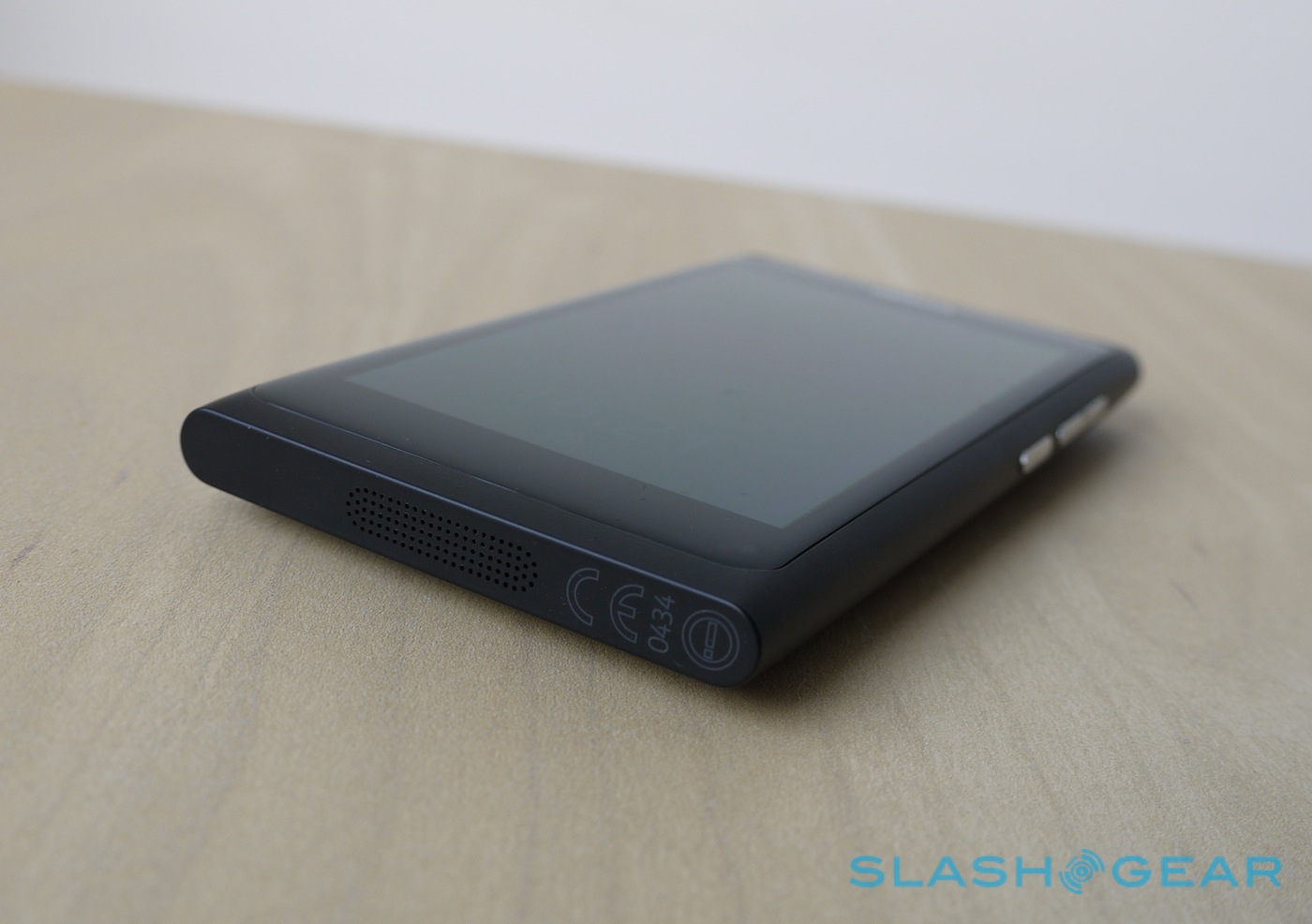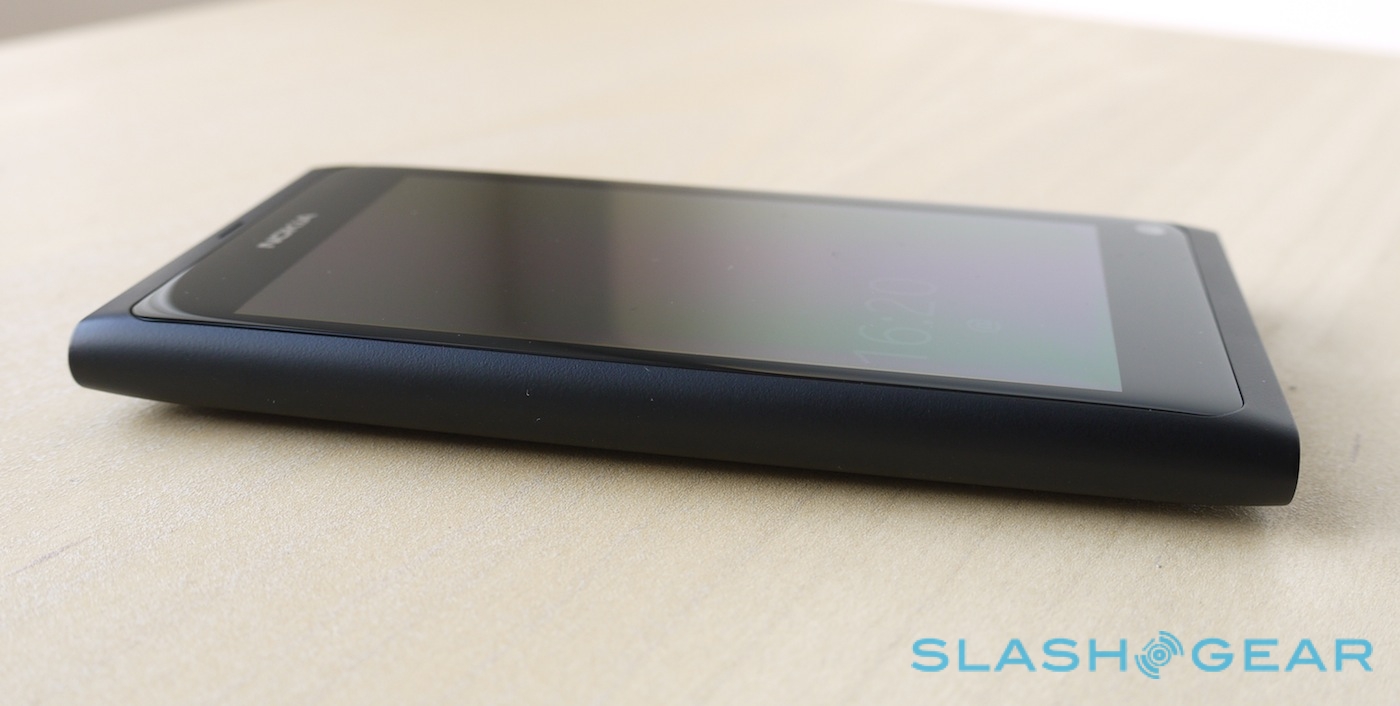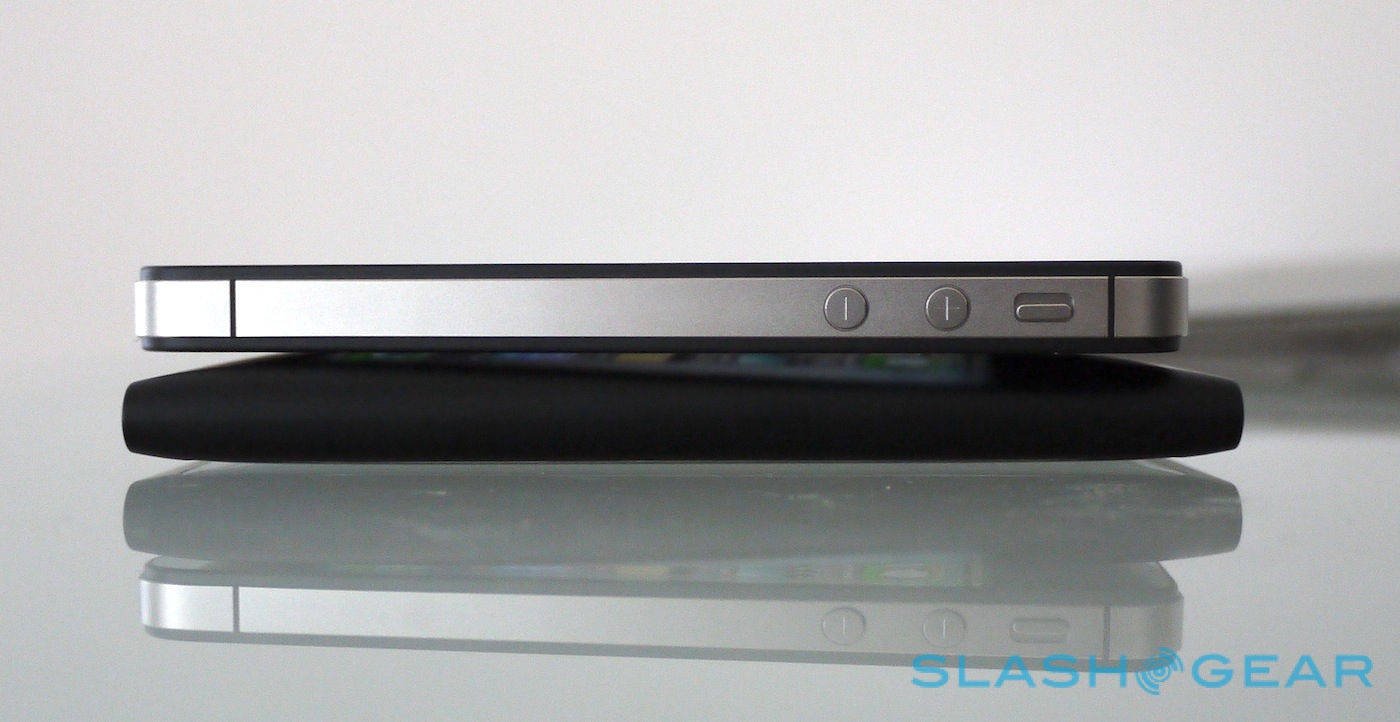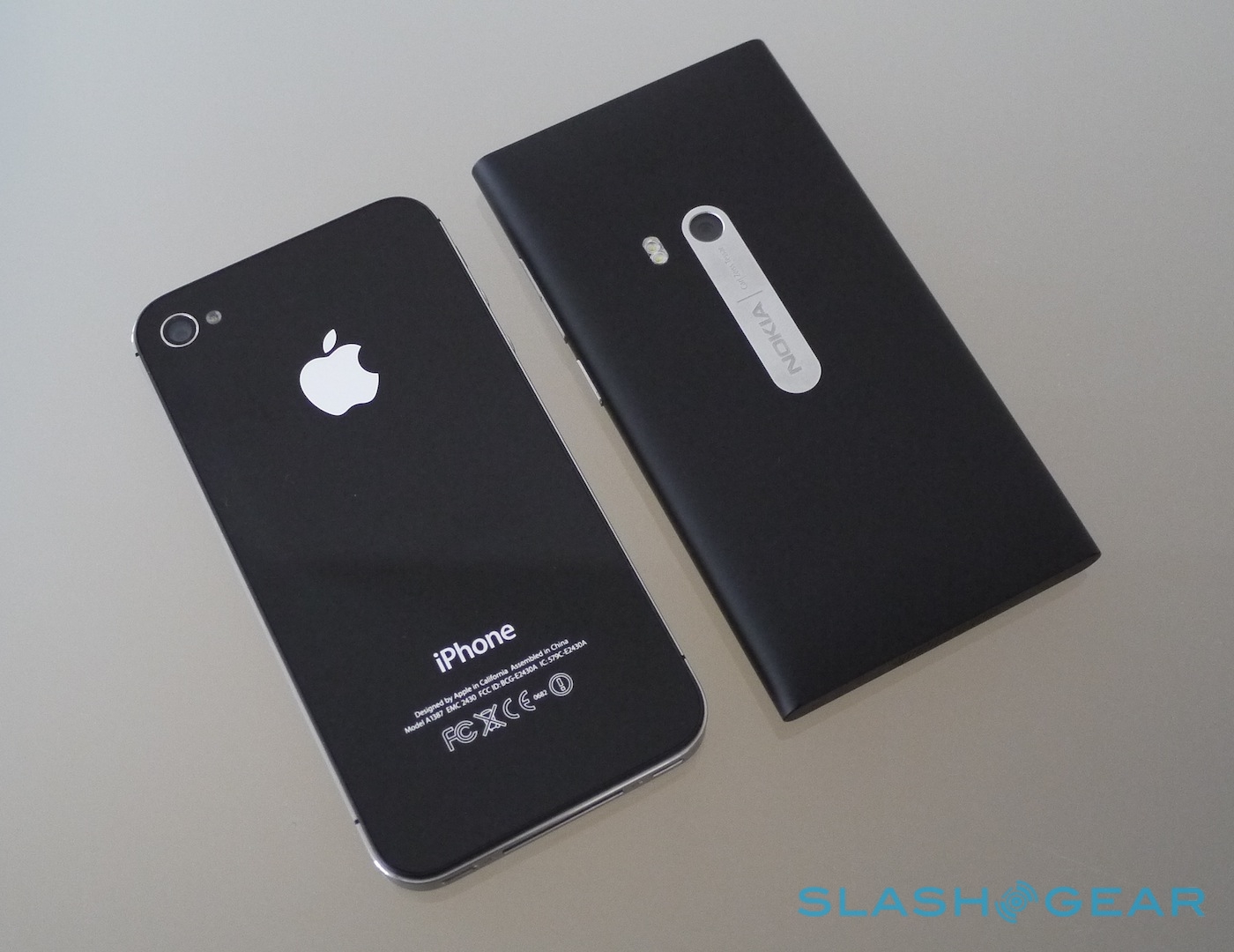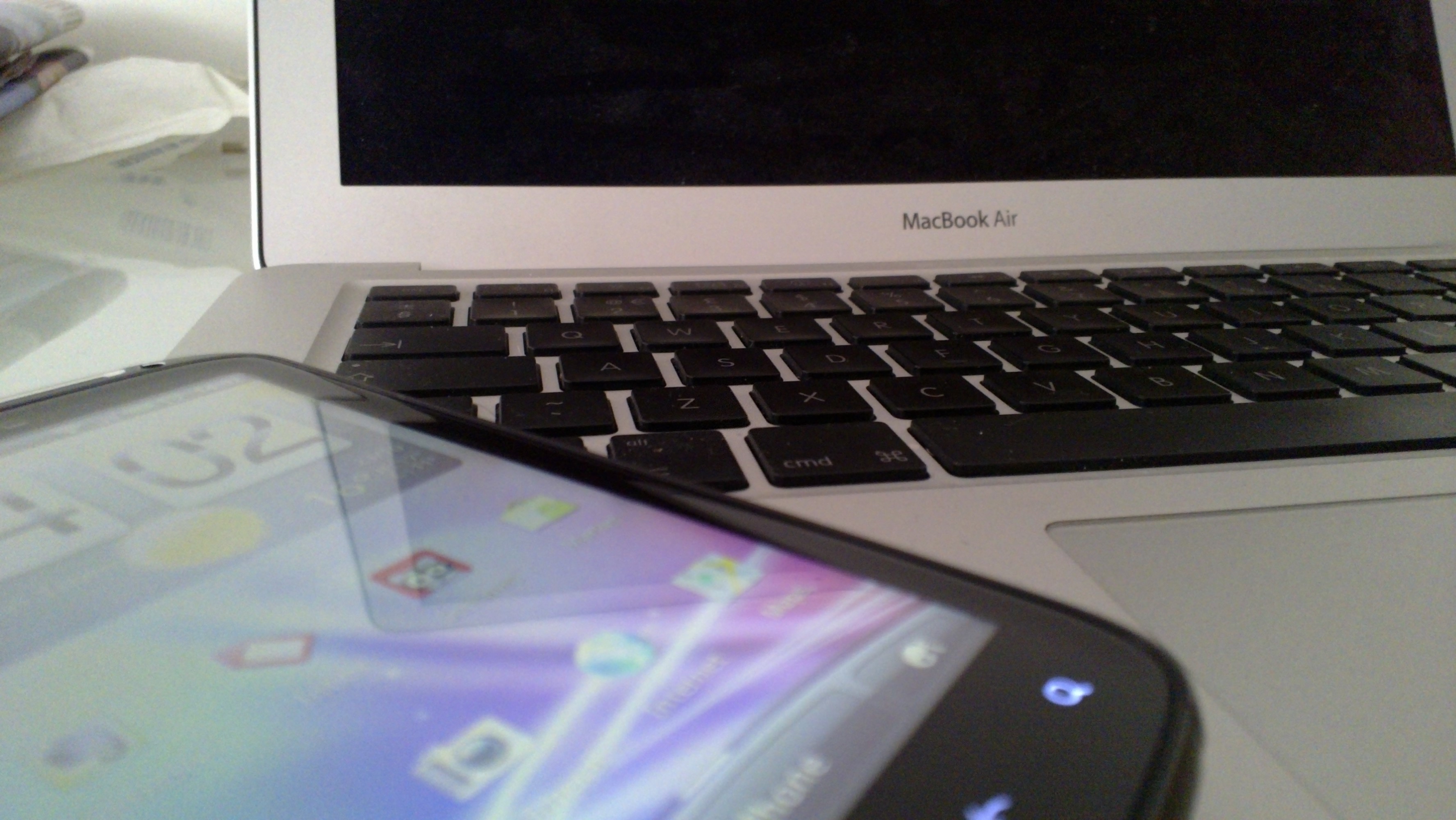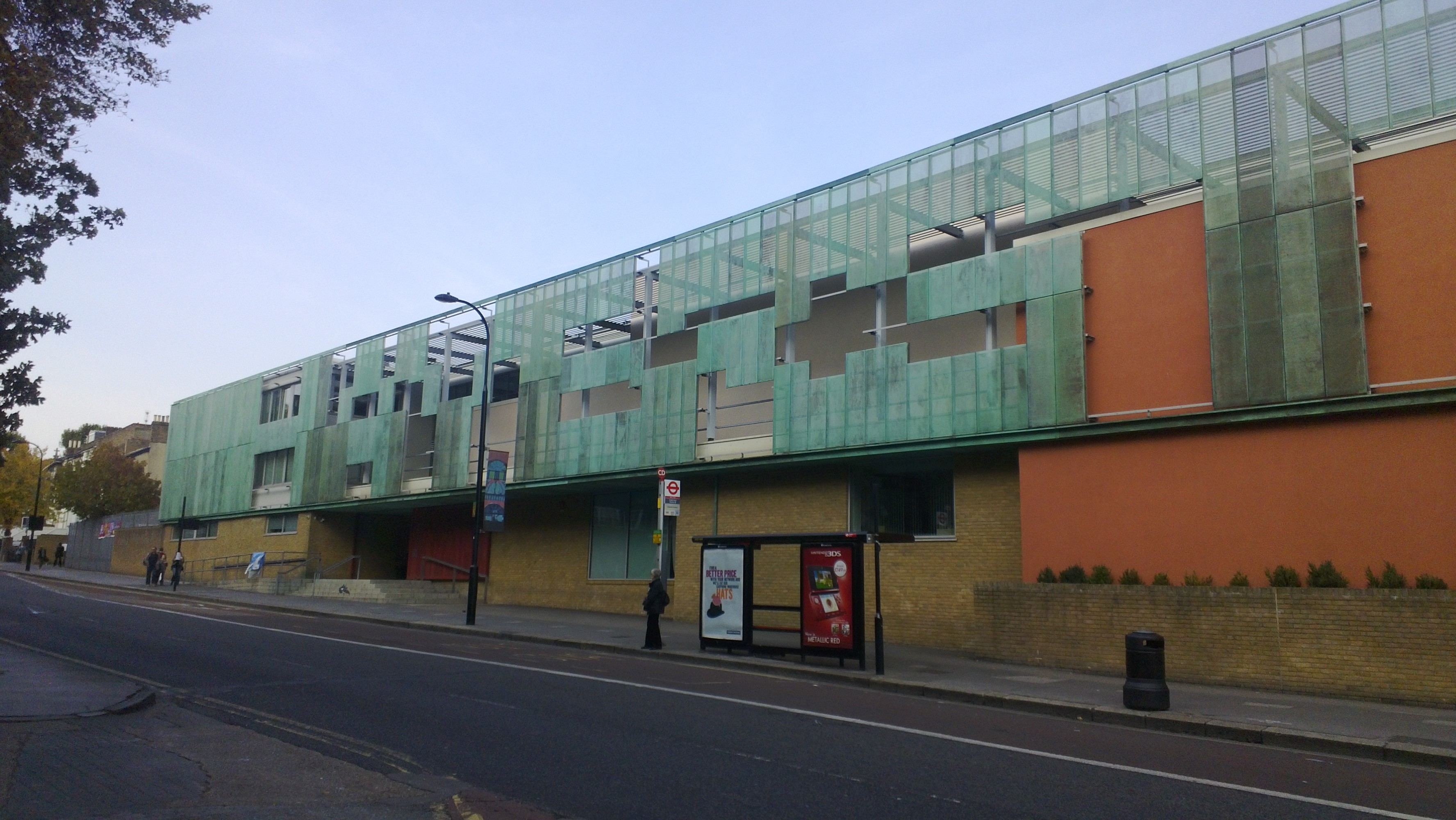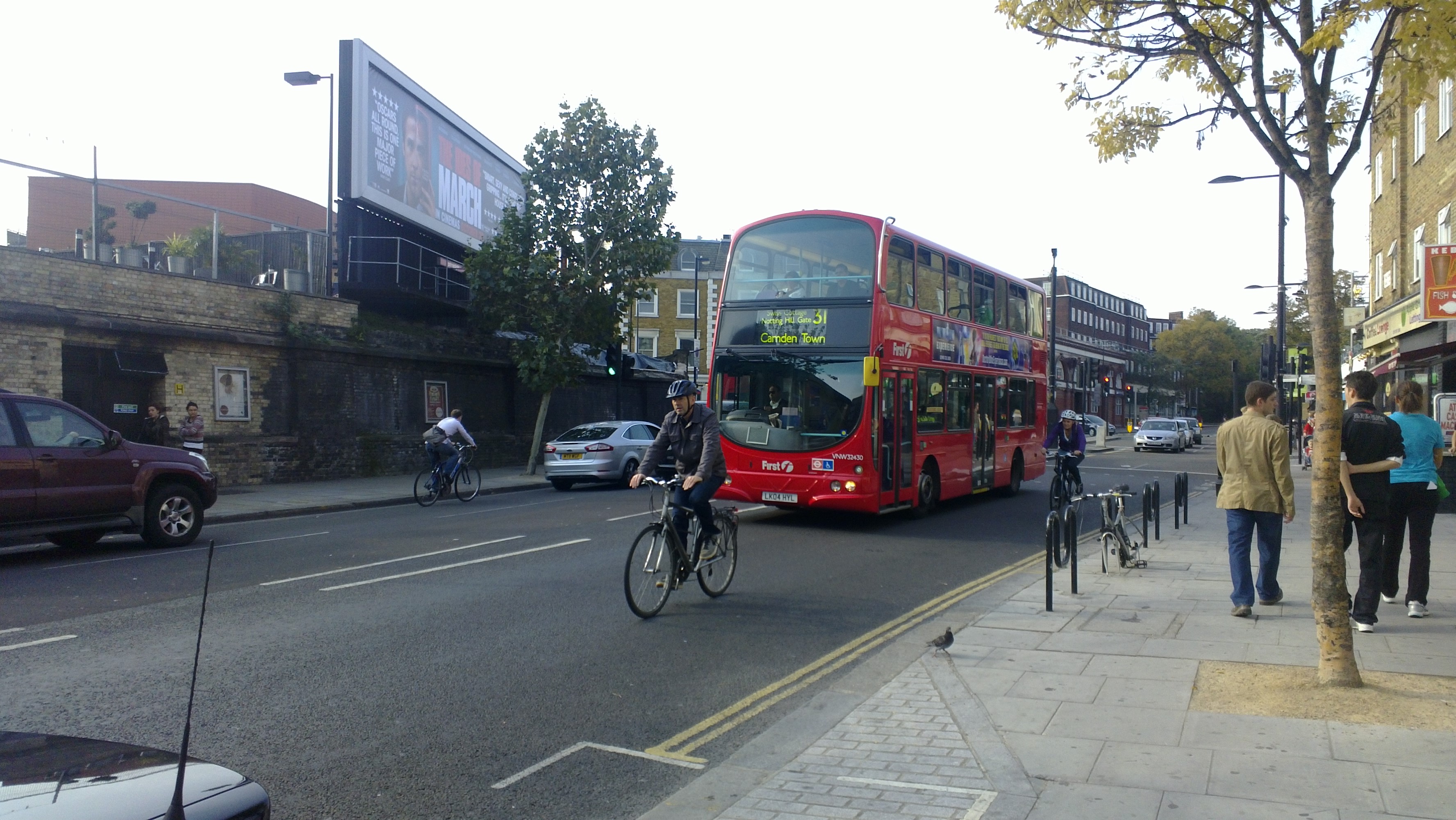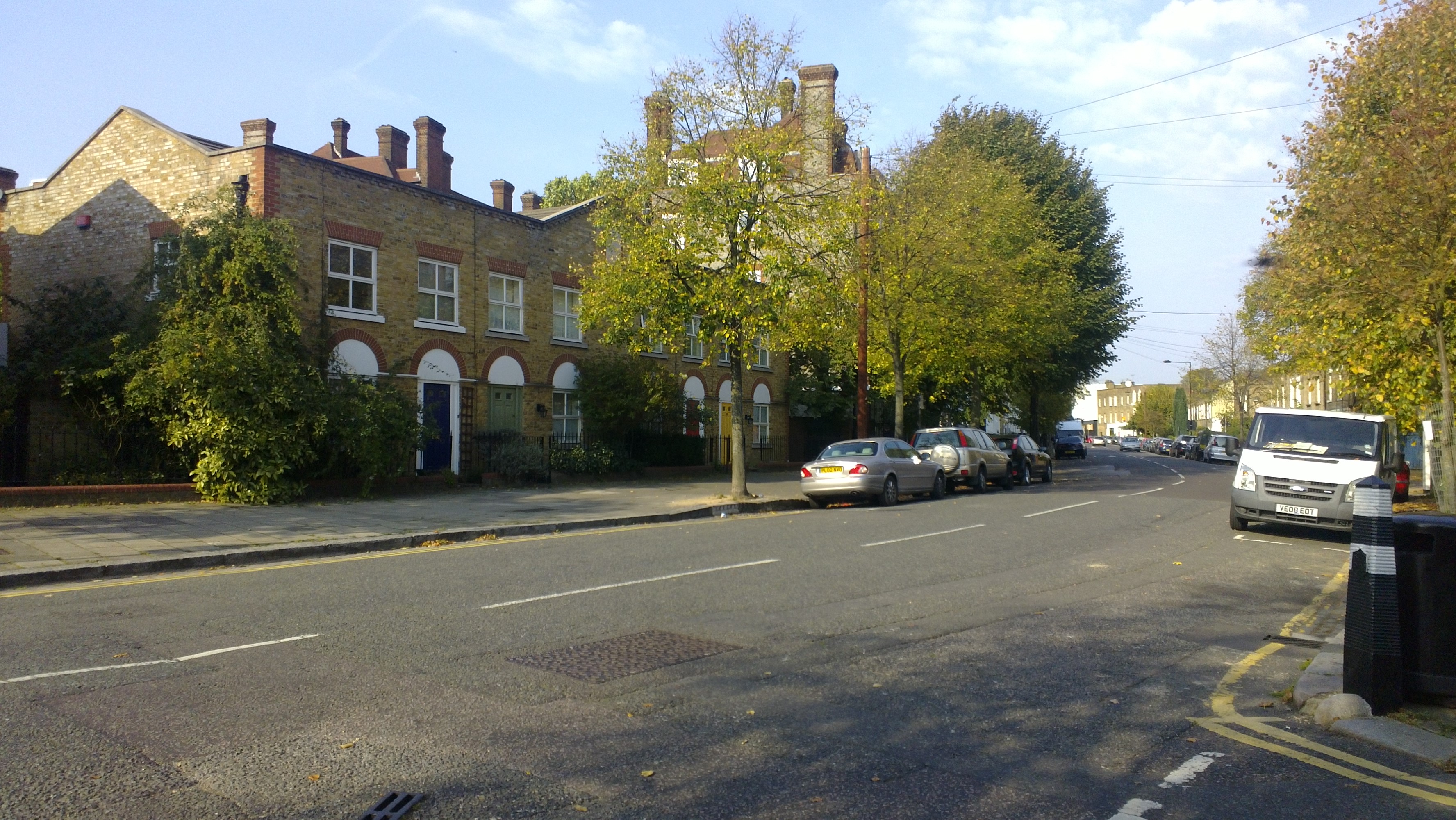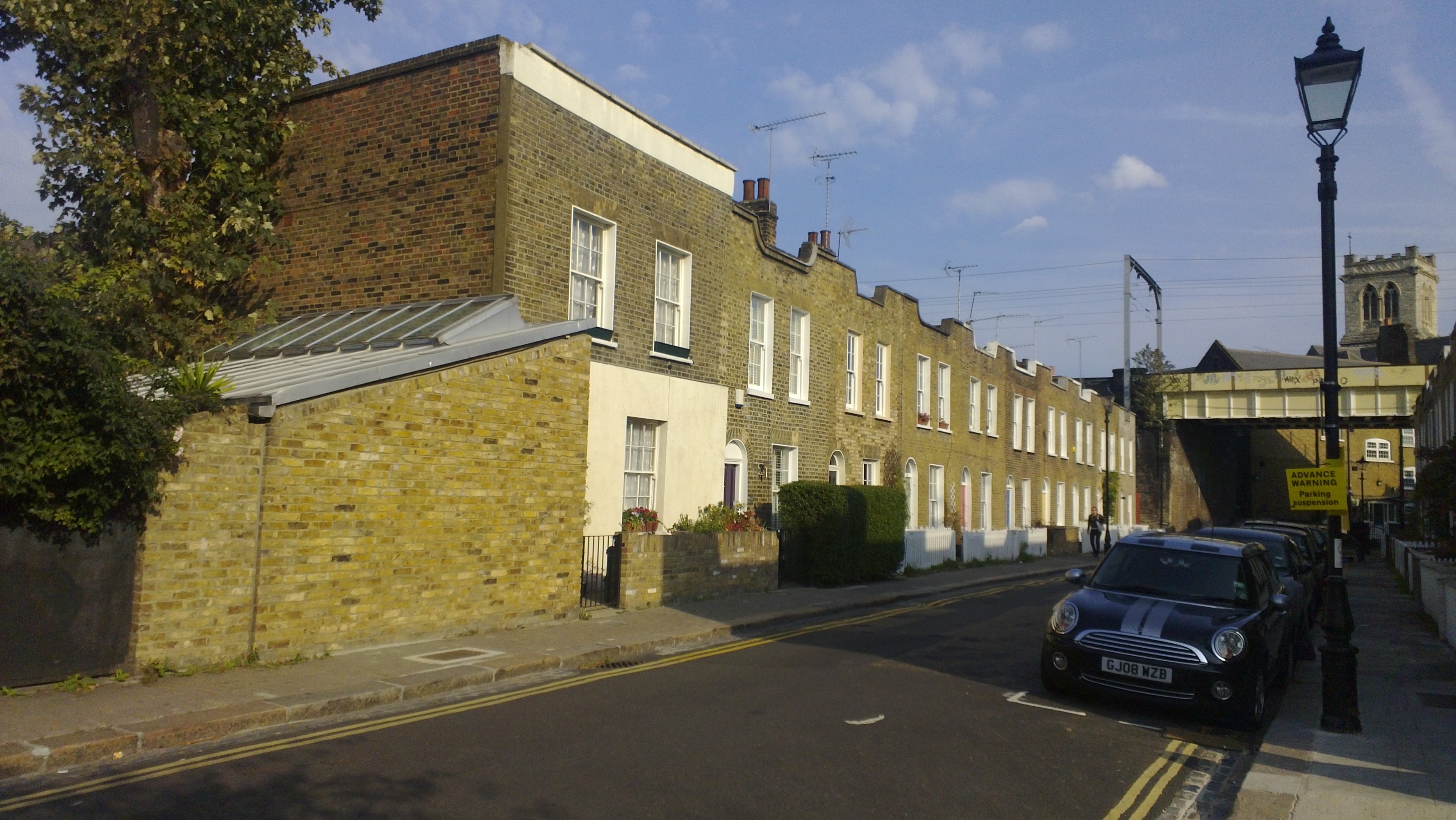Nokia N9 Review
It's somehow fitting, running our review of the much-anticipated Nokia N9 smartphone on the eve of Nokia World 2011. The company is expected to reveal its plans for salvation, namely adopting Windows Phone, while the N9 runs what Nokia used to believe would save it, MeeGo. A splash of uniqueness never hurt any device, and the N9 has built up a vocal following, convinced MeeGo should have been the Finn's focus instead of a deal with Microsoft. Has rarity blinded rationality, or is the N9 really a bittersweet slice of not just what could've been, but what should've been? Read on for the full SlashGear review.
Hardware
Even the harshest Symbian critics have struggled to criticise Nokia's hardware, and with good reason: the company has consistently pushed out slickly-designed phones and smartphones. If we had a dollar for every semi-recent Nokia handset review we've seen that concludes "If this phone were running Android" or similar, well, we'd probably have enough to buy ourselves an N9 outright.
Nokia has certainly excelled itself with the N9. The chassis – a pillowy 116.45 x 61.2 x 7.6-12.1 mm and 135g – is a CNC'd chip of pure polycarbonate, shaped like a swollen battery with tapering ends, and nestling into the hand with a feel that falls somewhere between plastic and anodized metal. Three color choices, of cyan, magenta and black, are the pure, unpainted hues of the plastic itself: scratch the N9 and you'll find more of the same underneath, rather than ugly white.

Up front is a 3.9-inch AMOLED capacitive touchscreen running at 854 x 480 resolution, the highest of any Nokia smartphone to-date, and using the company's ClearBlack polarizing system for improved contrast. Nokia is particularly proud of the way the AMOLED and the glass have been constructed, with no air gap in-between. That makes for a picture that seems to float just under the fingertip, or even look as though it's been painted on the glass.
Colors are rich and Nokia's UI scheme – the black background blending in with the black Gorilla Glass, which itself curves smoothly to fuse with the body – uses this to its advantage, bright icons standing out like colorful shards. Viewing angles, too, are impressive, in both portrait and landscape orientation, though perhaps not quite up to the standard of some of Samsung's recent Super AMOLED panels. Still, it's a beautiful, highly usable display with great touchscreen response.
Physical controls are limited to just a volume rocker and power/lock button on the right side. On the top edge there's a 3.5mm headphones socket – you also get Bluetooth 2.1+EDR for using headsets – and, under a hinged cover, a microUSB port for charging and syncing. Next to that is a small caddy for a microSIM, the same size as you'd find in an iPhone 4. Our one design complaint would be this arrangement of pop-up and sliding doors, the microUSB cover sometimes proving reluctant to flap back down.
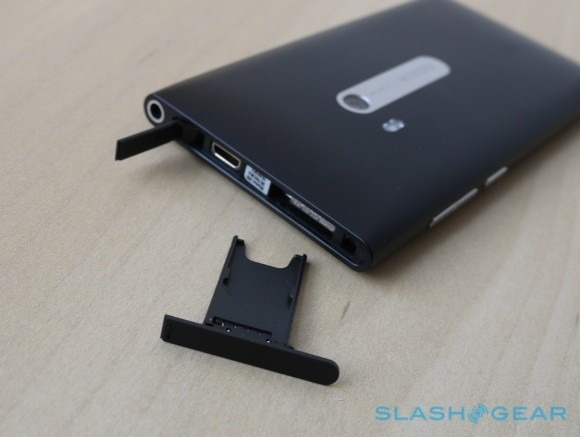
Nokia has given the N9 two cameras, an 8-megapixel autofocus unit on the back with a dual-LED flash and Carl Zeiss optics, and a front-facing camera. Unusually, this front-facer is in the bottom right corner of the display, rather than somewhere at the top, likely for reasons of internal construction rather than anything else. Doubly-odd, there's no actual way to access it, at least using the camera app Nokia preloads. On the bottom edge is a speaker with a surprising amount of volume and body to it.
Inside things are a curious mixture of technologies, some at the cutting edge of the segment and others dawdling behind. At its heart, the N9 runs a 1GHz Texas Instruments OMAP3630 processor paired with PowerVR SGX530 graphics and 1GB of RAM, an ARM Cortex A8 combination that was only really bleeding-edge back when Motorola's DROID X launched in mid-2010. That's paired with a pentaband UMTS/HSPA+ radio with support for up to 14.4Mbps downloads and 5.7Mbps uploads. As with other recent Nokia handsets, the N9's 3G will work happily on both AT&T and T-Mobile USA's networks, something that can hardly be said for most other smartphones on the market.

Then there are the various sensors, the accelerometer and digital compass, a proximity sensor, ambient light sensor and GPS/A-GPS. No FM radio, nor an FM transmitter, but you do get NFC: Nokia uses that with its newest accessory line-up of speakers, headsets and cordless headphones, bypassing the traditional Bluetooth PIN-pairing system and instead allowing you to tap the N9 to the peripheral and, after a second or two, have them connect automatically. A second tap disconnects. It's a system that works surprisingly well, with music playback automatically re-routed while in-progress calls are handed over instantly between the phone's speaker dual microphone array and your Bluetooth headset. Of course there's WiFi a/b/g/n too.
Nokia N9 NFC demo:
[vms e6a358a81dee52493dd0]
There have been some compromises made to achieve Nokia's aesthetic. Most obvious are the absence of a user-accessible battery, the N9's 1,450 mAh Li-Ion power pack being sealed inside the casing, and the reliance entirely on internal storage rather than offering a microSD card slot. Nokia has opted for two extremes in memory, either 16GB at the entry-level or, for those with capacious multimedia collections, a 64GB version.
MeeGo
MeeGo has had a rocky road to market, and it's not out of the woods quite yet. The combination of Nokia's own Maemo platform, most memorably implemented on the N900, and Intel's Moblin platform, most memorably for its, well, amnesiac impact on the PC market, MeeGo was to be the cross-platform best of both worlds. To make things more complex, however, the software build for the N9 was already underway in the midst of Nokia and Intel's partnership agreement, and so developed partially independently as MeeGo/Harmattan.

Unfortunately, Nokia's own work on MeeGo proved insufficiently rapid for newly-crowned CEO Stephen Elop, who balked at the company's sluggardly roadmap and decided to throw in with Microsoft on Windows Phone. MeeGo, it was announced at the time, would be sent back to the labs, a test-bed for future "game changer" technologies but with no concrete commercial future. Soon, it will spar off on another path, as part of the recently announced Tizen, yet another platform with open-source aspirations and ambitions to be on your phone, your tablet, your netbook and your notebook.
There's the troubled birth, but is the N9 a wallowing nugget of misery or a shining beacon of what could've been?
Curiously, endearingly, frustratingly, it's broadly the latter. Like iOS, there are no widgets, but MeeGo feels like it has been designed with multitasking and social integration from the outset. The homescreen is a triptych of panes: a vertically scrolling app menu, with icons for all your software, then a task-switcher pane showing thumbnails of recently used apps in the order you last accessed them, and then finally a notifications pane, with weather, a section of email/calendar/etc alerts, and a long feed of recent updates from Facebook and Twitter. Swiping left and right slides between each pane.
Nokia N9 MeeGo demo:
The whole interface is awash with neat little animations and usability tidbits, all with touch at their heart. Lists spring and bounce when scrolled to their end, and there's no lag to be encountered in swiping. Tap the title bar, with its icons for battery, network status, time and activity, and up pops a simple pane showing the current profile – silent, beep or ringing, with the ringing bar extending to show ringer volume – volume and current connections or downloads, including WiFi status and your availability on Facebook chat, Skype and Google Talk, all of which are supported natively.
Navigating between apps is all swipe-based: swipe across the screen in any direction to exit the current app and return to the homescreen. Optionally, swiping down can close the app rather than leave it running in the background. Otherwise, manual task management is done from the multitasking pane, which by default shows four large thumbnails on-screen at a time, but with a pinch-zoom gesture can flip to showing nine, complete with a neat zooming animation. Tapping any app re-opens it; holding down on the thumbnail pulls up red "X" buttons for each app, allowing you to close it completely. A "Close All" option at the bottom takes you back to square one. It's a button we seldom felt the need to tap, however; even with 25+ apps in the list, the N9's 1GHz single-core handled things well, though occasionally we'd see a little sluggishness as apps loaded.

Considering how touch integration was so uncomfortably bolted onto Symbian back in the S60 v.5 (aka Symbian^1) days, a clumsy afterthought, it's great to see that Nokia's software engineers do actually know what they're doing with touchscreen technology. It took mere minutes to get used to the swipe multitasking, helped by the fact that MeeGo drops you back exactly where you were in the homescreen triptych, even if you were scrolled partway down the app launcher list. Apps introduce themselves with a sentence explaining the functionality: suggesting you sync music across from your computer, for instance, or inviting you to create your first note.
Then there are the less obvious elements, which help add to MeeGo's sense of depth. When locked, the N9 shows a dim white clock – the low-power benefits of AMOLED allowing it to stay active for this all the time, without draining the battery – and some notification icons, such as "@" when you have new emails. You can reach the regular lock screen by pressing the physical button on the side, but alternatively a brisk double-tap on the touchscreen takes you there too. From there you can see just how many emails you have, along with a preview of the latest; a swipe in any direction unlocks the phone.

Alternatively, though, you can swipe up halfway, pause for a second, and then get a row of four shortcuts along the bottom of the screen: phone, messages, camera and browser. Press the volume buttons while on the homescreen, and you can switch between profile modes without having to fully unlock the N9. Head into the settings pages, meanwhile, and you can find not only a percentage of what juice remains, but an estimate of talktime and standby time in days, hours and minutes. It even tells you the condition of the battery. Then there are data limit options, both for cellular data use on your home network and when roaming.
Software
Nokia doesn't stint on preloaded applications with MeeGo: the N9 comes out of the box with just about everything you'd expect from a recent smartphone. Email supports Exchange, Gmail (though not with push), and any IMAP/POP account you might have, served up in a universal inbox. There's no conversational view, unlike on Android, though you can pinch-zoom to get in close to attached photos and text. Begin scrolling and a shadow scrollbar appears down the right hand side: drag it, and you can easily jump down the list by date. Up to a week's worth of messages are synchronized, and the dedicated Search app includes those – though not what's still on the email server – among its queries.
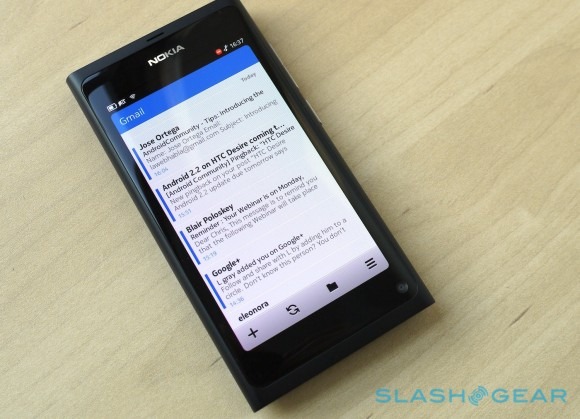
The on-screen keyboard is particularly good, offering both portrait and landscape variants and supporting a sharp haptic buzz that does a great job of feeling localized to your fingertip. Audio feedback is another option. Word correction and auto-complete are each supported, and while the N9 doesn't have as large a screen as, say, some of the more recent Android devices, we still had no issues with accurate text-entry on it.
The N9's browser supports pinch-zooming, text-reflow and HTML5, though oddly not Flash, despite that being offered on Symbian phones. Still, it's a neat little app: bookmarks are – either conveniently or overwhelmingly, depending on how addicted to creating favorites you are – saved as icons in the app pane, and each open window is served up individually in the task switcher.

Calendar and Contacts work as you'd expect, combining your Google, Exchange, Facebook and other sources into a single location. MeeGo pulls in profile photos from your Facebook friends, and creates monogram "squircles" for those it can't find. The dedicated Facebook and Twitter apps – which each feed their recent updates into the notifications homescreen pane – are basic but serviceable. Oddly, while you can upload photos directly to Facebook, you can't do the same with Twitter, and you're also limited to just one of each account. Those hoping to manage their work and personal tweets from the N9 will be disappointed.
As with Symbian Nokia devices, the company doesn't assume you'll be satisfied with solely cellular voice calls. A Skype client – which also supports chat and contacts sync – is preloaded, plus those with their own SIP accounts can register them and access VoIP as another option in the dialer. Both WiFi and 3G VoIP is supported, though your carrier may not like the latter.
Multimedia on the N9 consists of the gallery, the music app and the video player, plus a link to the mobile YouTube site. Images can be tagged and viewed by tag group, as well as marked as a favorite for quicker subsequent access. Both photos and video from the N9's camera are mixed together in the gallery timeline, though you can pull out video clips separately. Images can be shared via NFC, if you have another device that supports the standard.

The music app is straightforward and somewhat reminiscent of an iPod in its UI. Album art thumbnails cluster at the top of the screen, with links to Artist, Album, Song and Playlists below. There's also access to the Ovi Music store, offering MP3 song and album downloads directly to the N9. Audio quality from the integrated speaker was loud and clear, with the phone doing a decent job of cranking up volume without suffering too much distortion. Finally there's the video app, which seems intended for side-loaded clips rather than those you shoot yourself with the N9's camera. H.263, MPEG4-SP & ASP, H.264 BP/MP, WMV9 / VC-1 and Mkv (Matroska) formats are supported. There's no apparent way to access your own footage from the app; instead you have to play it back through the gallery.
Nokia Maps and the Drive app are two of the jewels in the company's software and services crown. Offering a solid alternative to Google Maps Navigation on Android. As well as comprehensive NAVTEQ mapping data – which can be downloaded on a country-by-country basis directly to the phone's own storage, useful if you're going abroad and want to navigate while avoiding data roaming fees – there are turn-by-turn directions and points of interest with reviews from Qype and other sources. Directions can be tailored for those driving and those on foot, with the former getting the dedicated Drive app that presents an oversized, finger-friendly interface for when you're behind the wheel, and the latter usefully flipping the map so that your next turn is always shown ahead of how you're facing.

All the basics are covered, with a calculator, documents viewer, RSS feed viewer and notes app, plus a WiFI Hotspot app that allows you to share your 3G connection with multiple WiFi-connected devices, such as notebooks and tablets. There are also four games – Angry Birds, GOF2, NFS Shift and Real Golf 2011 – none of which exactly burn a hole in the current line-up of mobile titles, but which play well on the N9 and look great on the ClearBlack display.
Nokia's comprehensive selection is a good strategy for the company to take: it keeps users away from the Ovi Store and potential disappointment. There are certainly apps for the N9 in there – MeeGo support Qt development, just like Symbian – but simply not as much choice as on an Android handset or an iPhone. Whether that's likely to change much is questionable: Nokia's public change of direction, away from Symbian, MeeGo and Qt and toward Windows Phone, telegraphs a pretty clear message to developers deciding where to invest their time and efforts.
Camera
Although the N9 has two cameras, MeeGo only comes set up to to use one of them: thankfully it's the rear-facing f2.2 8-megapixel snapper with the Carl Zeiss optics. The camera app itself is straightforward to use, though there's no dedicated shortcut key; the volume rocker acts as a control for the 4x digital zoom. Touch-to-focus is supported, and the autofocus system in general is quick, though we found it could be a little less accurate during macro photography.
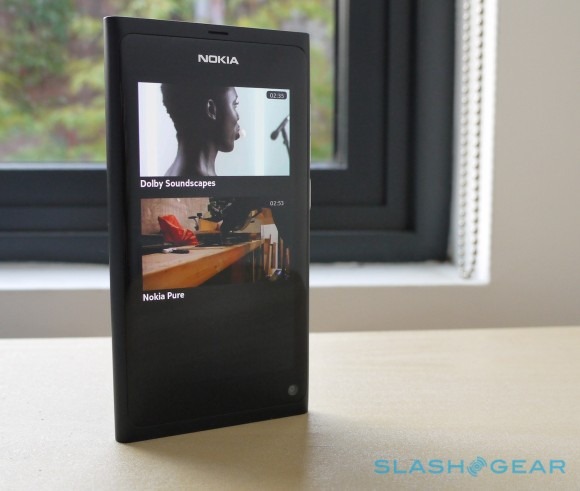
The end result, though, is excellent. Colors are accurate and on the pleasing side of saturated, while exposure is only frustrated by particularly over-illuminated scenes. There's a huge amount of detail in each shot, too, though some noise can creep in there as well. The dual-LED flash is bright and often overwhelming, and we found low-light shots could sometimes do better leaving things to the f2.2 aperture lens.

Once you've taken a shot, you can do red-eye removal, straighten the frame and automatically fix the colors and exposure with the onboard editing tools, all the while leaving a copy of the original frame untouched for later experimentation.
The single-core processor, among other things, keeps video recording to 720p HD at most, rather than 1080p. Nonetheless, you get 30fps support in 16:9 aspect, with some control over white balance and exposure. There's also continuous autofocus along with stereo sound recording thanks to the twin microphones.
The eventual clips are solid, if not outstanding. The N9 shows a tendency to over-expose, leaving brighter areas of the shot washed out. There's also noticeable noise and some blurring with faster-moving objects. Still, the autofocus shows admirably little hunting, and the sound pickup is good.
Phone and Battery
Nokia's reputation for solid handsets isn't just limited to build quality: radio performance is also something the company consistently gets right. The N9's pentaband UTMS/HSPA and quadband GSM/EDGE leaves it content on pretty much any GSM network you can mention, in fact the trickiest part might be finding a microSIM to use. We saw no problems with call performance, and the dual-microphone noise cancellation system worked well without leaving speech too artificial.

As for the battery, Nokia says to expect up to 11hrs GSM talktime (6.5hrs WCDMA) or up to 340hrs GSM standby (420hrs WCDMA) from a full charge, or alternatively 6.5hrs of WiFi browsing, 5hrs of HSPA browsing, 5hrs of 720p HD video playback or 50hrs of audio playback. In practice, with mixed use including some Nokia Maps navigation, browsing over both WiFi and 3G, some photography and multimedia playback, and push email turned on, we reached the end of the day with juice to spare. In fact, the N9 made it through a fair chunk of the next day, too.
Wrap-Up
It's not often we review what's effectively a dead product. Usually, if a manufacturer decides to cancel a project, or if the company itself folds, that happens well before the doomed devices reach the SlashGear test bench. Even in the case of the HP TouchPad, the company was still full-steam-ahead at review time, only axing the poorly-selling slate when it became clear how much it was struggling.

Our frustration is that the N9 doesn't deserve to die. In fact, Nokia has delivered a double-punch of compelling software and beautiful hardware: a device that earned curious, envious glances while we played with it in public, and a platform that was both instantly usable and consistently slick. We try not to play "What could've been" because, frankly, there's usually interest and intrigue enough in the directions manufacturers do eventually take, but forgive us if we stare wistfully off for a while, imagine a whole range of MeeGo smartphones helping Nokia reclaim its crown.
Rationally, though, it's tough to recommend the N9 to the general smartphone audience. Scarcity is one big element of that: the number of locations Nokia will actually sell the smartphone is severely limited, the focus very much being on Windows Phone. Meanwhile, the ominous future of applications for the MeeGo platform is our other big concern. There's enough pre-loaded to certainly best any feature-phone, but smartphone owners expect apps; that leaves the N9 too expensive to rival a cheap feature-phone and with too shaky a future to take on Android or iOS.

Nonetheless, it's hard to escape the polish of the N9's hardware/software combination. Seldom are we so reluctant to part with a review unit as we are over sending the N9 back to Nokia. It may not be the fastest, or the most whiz-bang of the smartphones, but it's holistically beautiful and an example in many ways of why Nokia once led the mobile field. The saving grace is that we know Nokia is carrying forward the design and build of the N9 to at least one of its Windows Phone 7 handsets: they may not have MeeGo, but they'll have a future, and we've always had a soft-spot for Microsoft's platform too. We can't blame Nokia for the direction the company has chosen – there's more to it than mere software; Windows Phone gives them a platform, a developer ecosystem, and the might of Microsoft among other things – but we can be more than wistful that the N9 and MeeGo came that little bit too late to have their true worth recognized.

